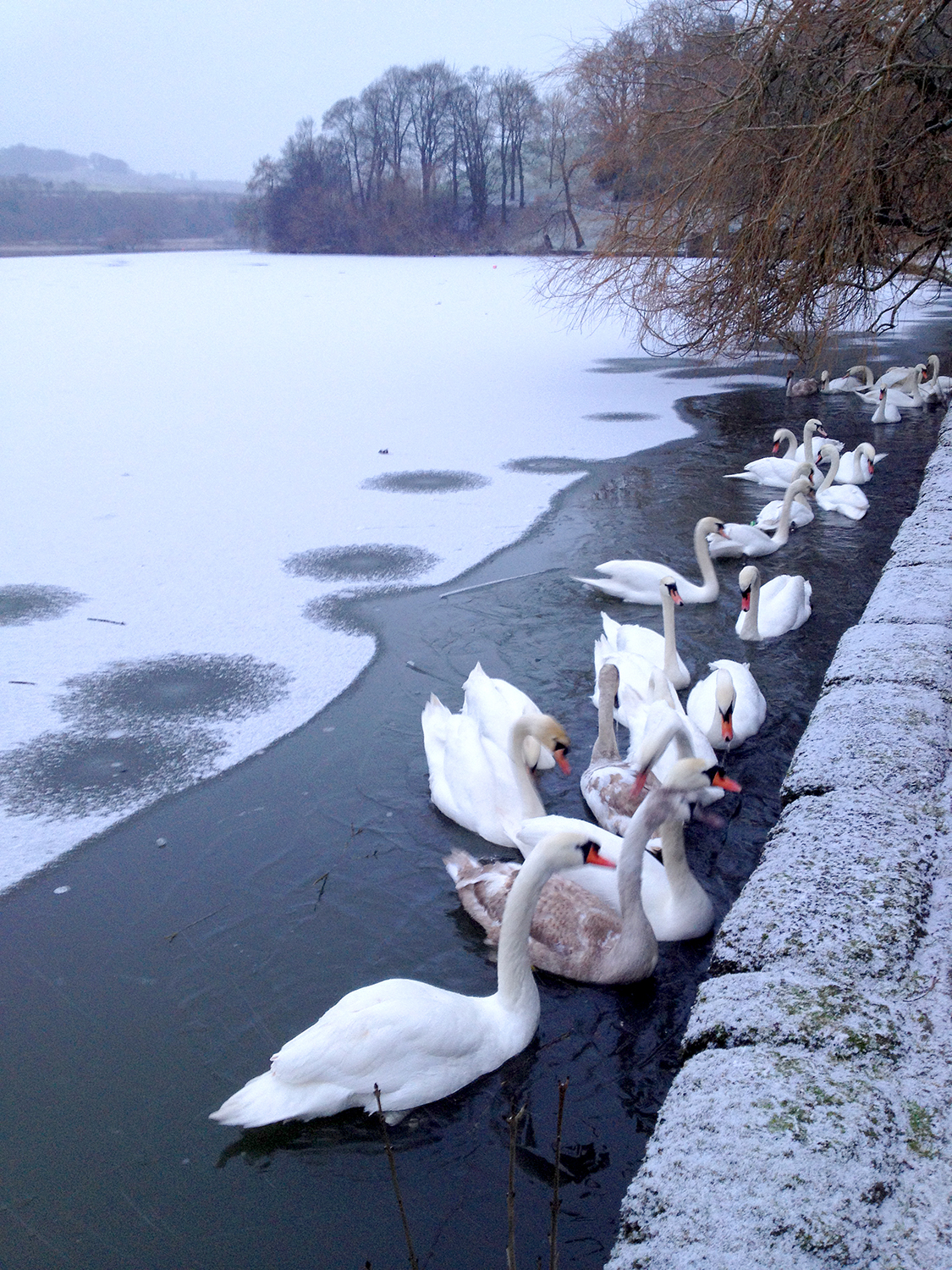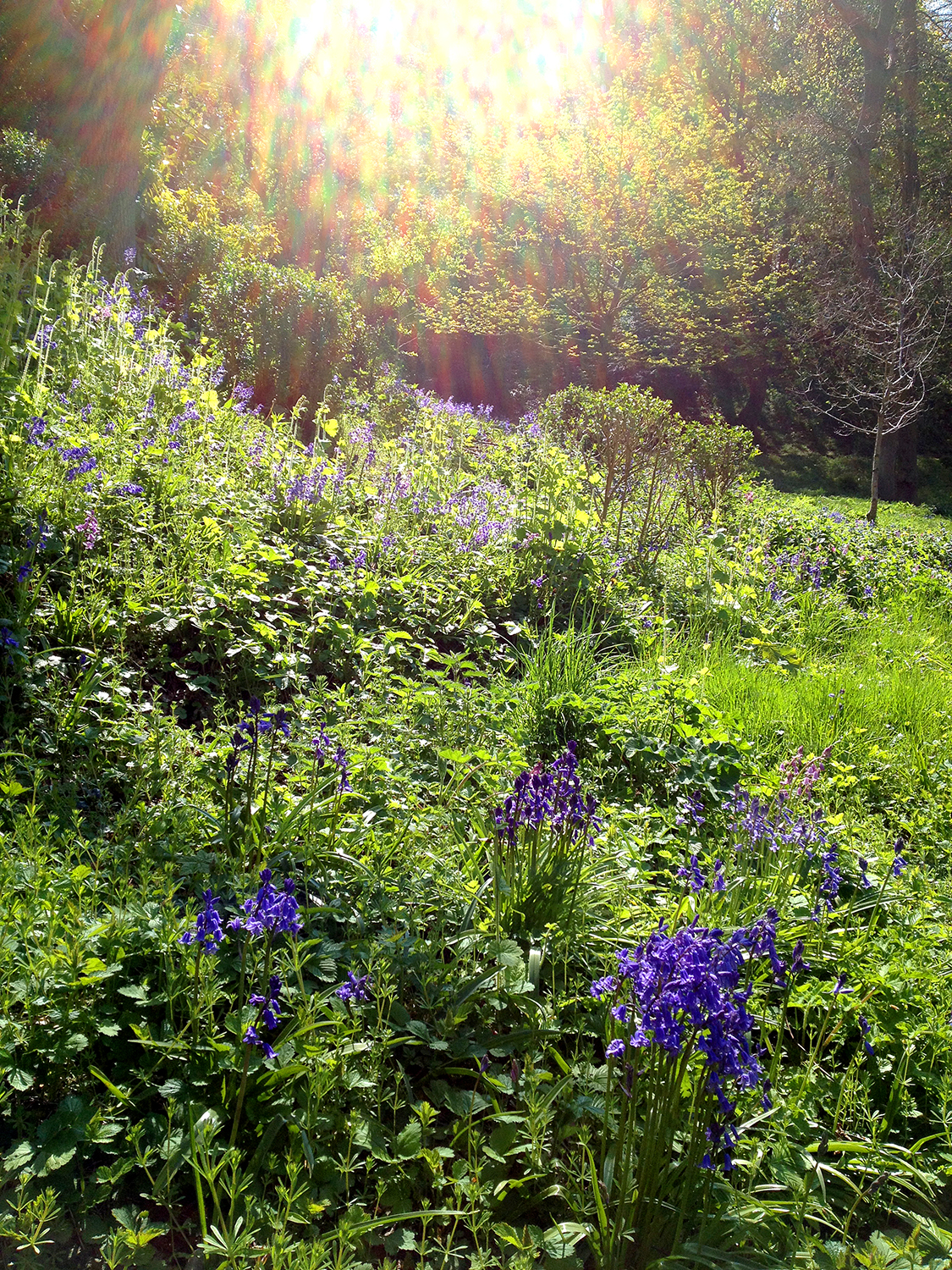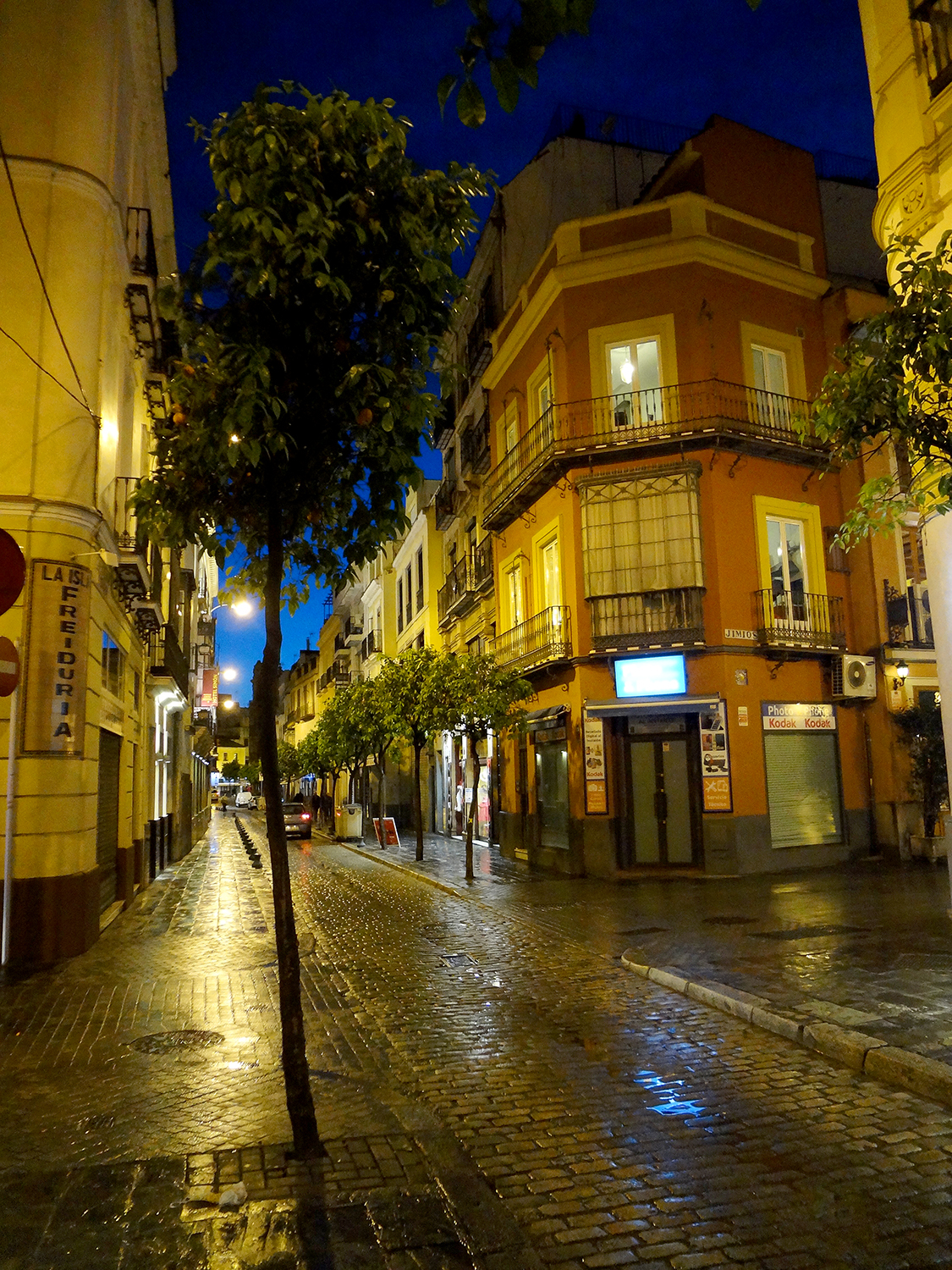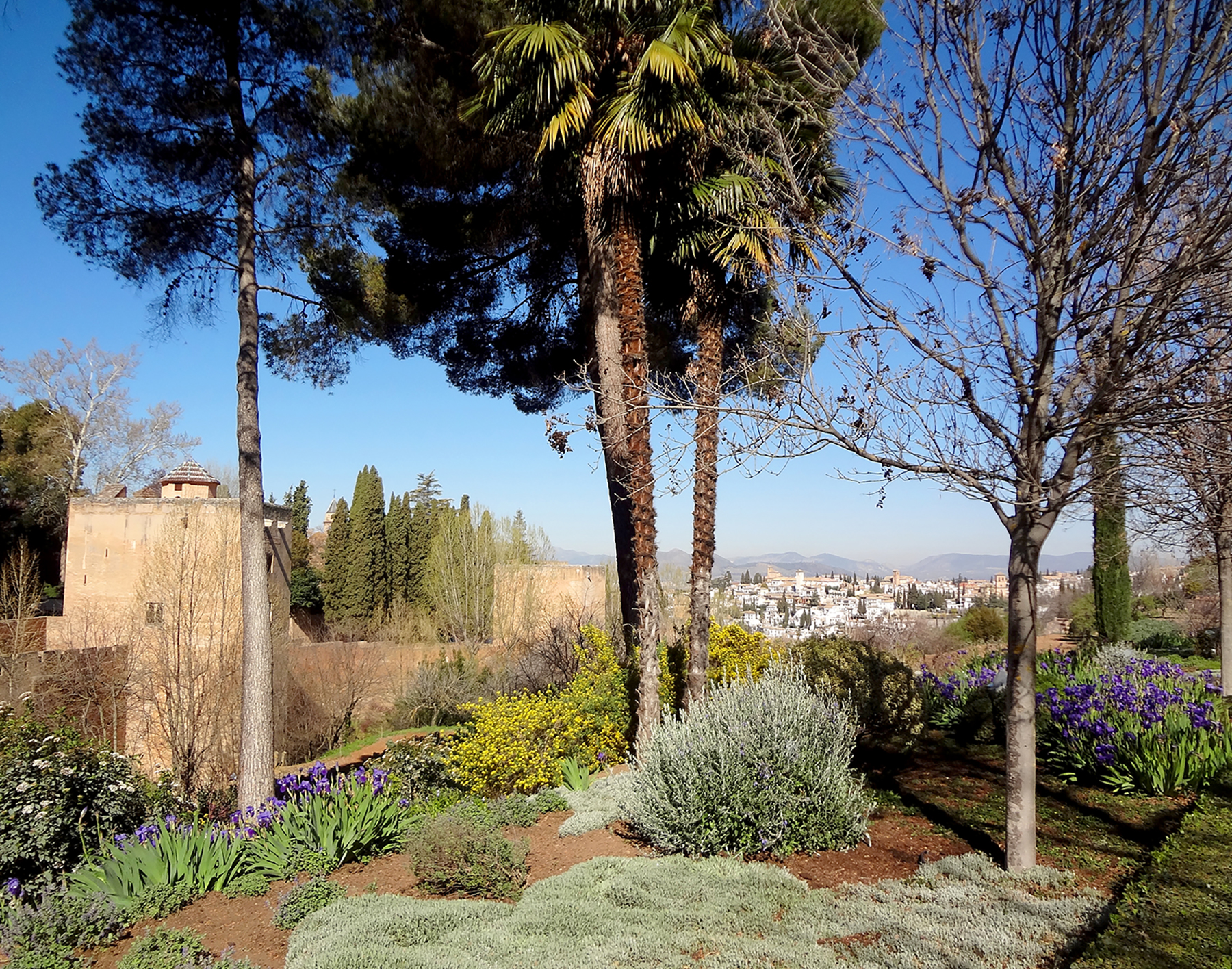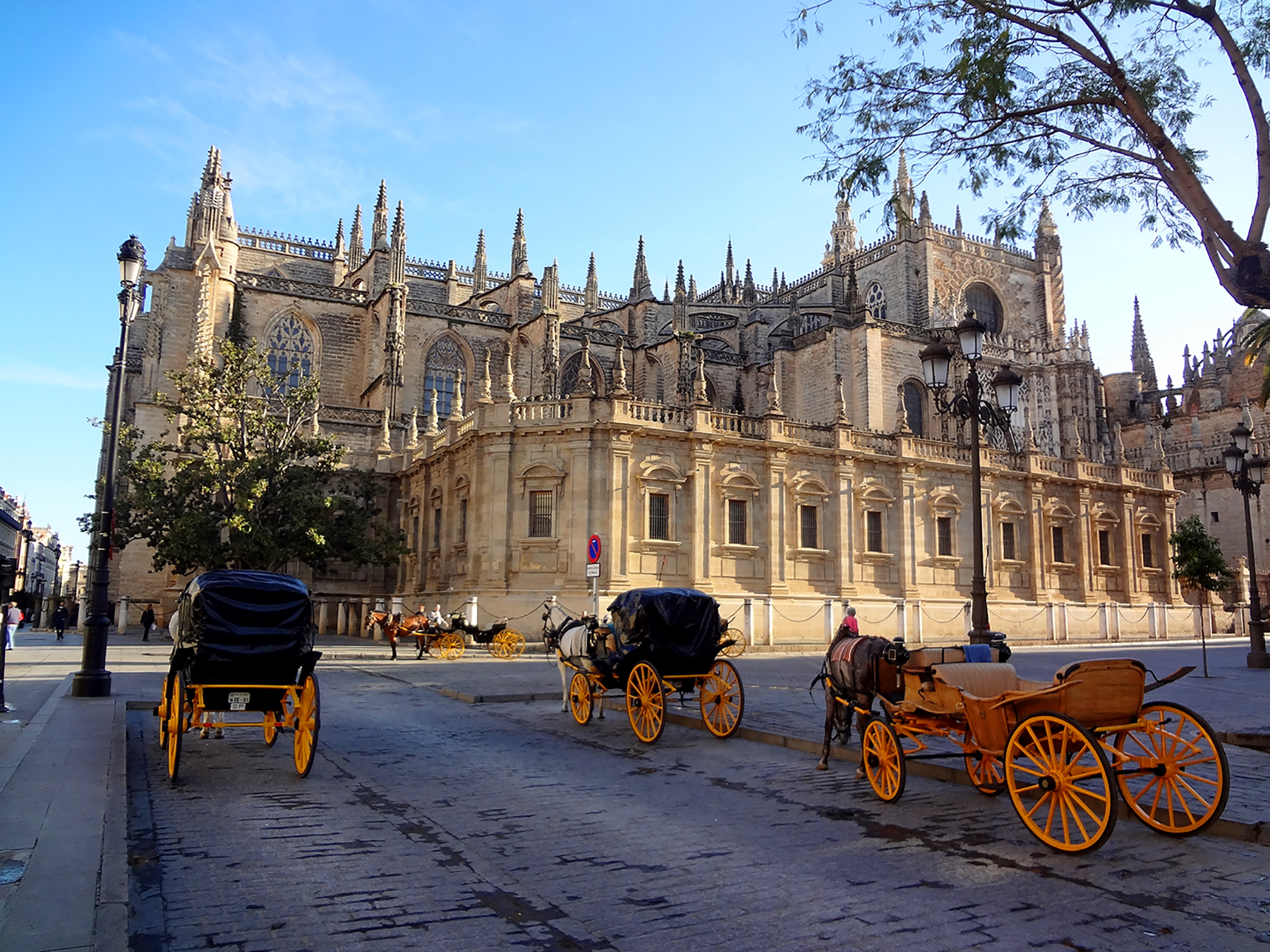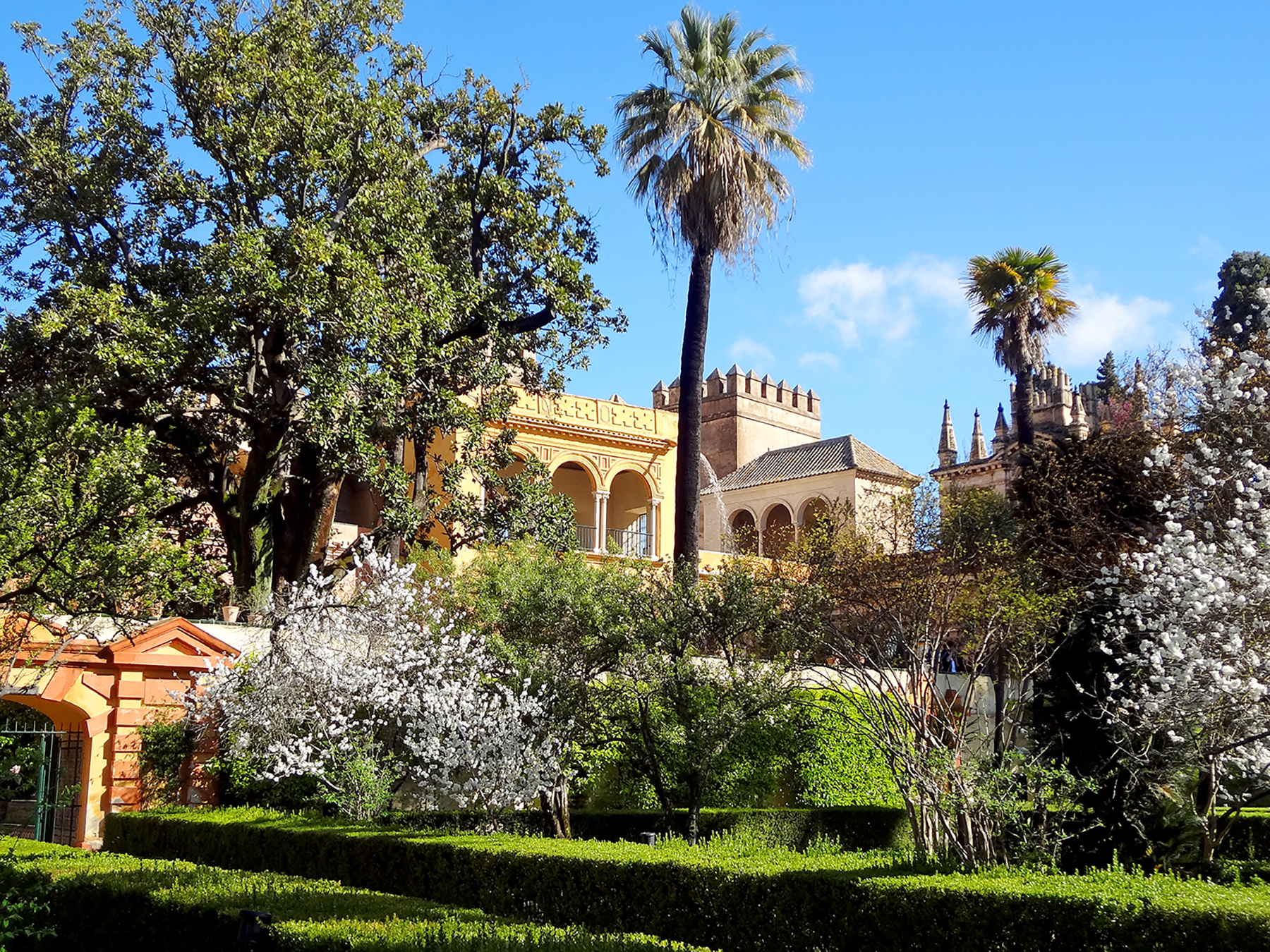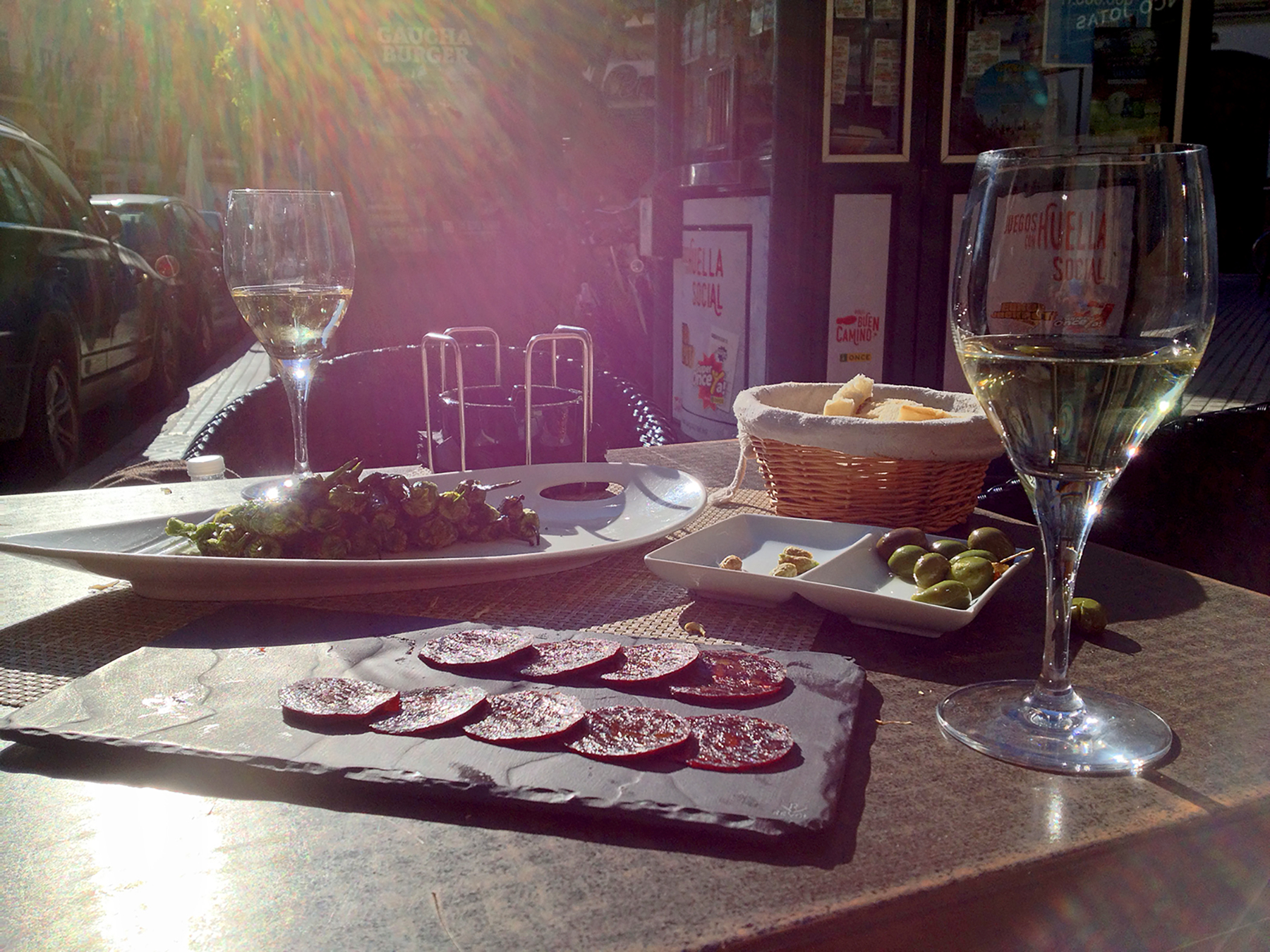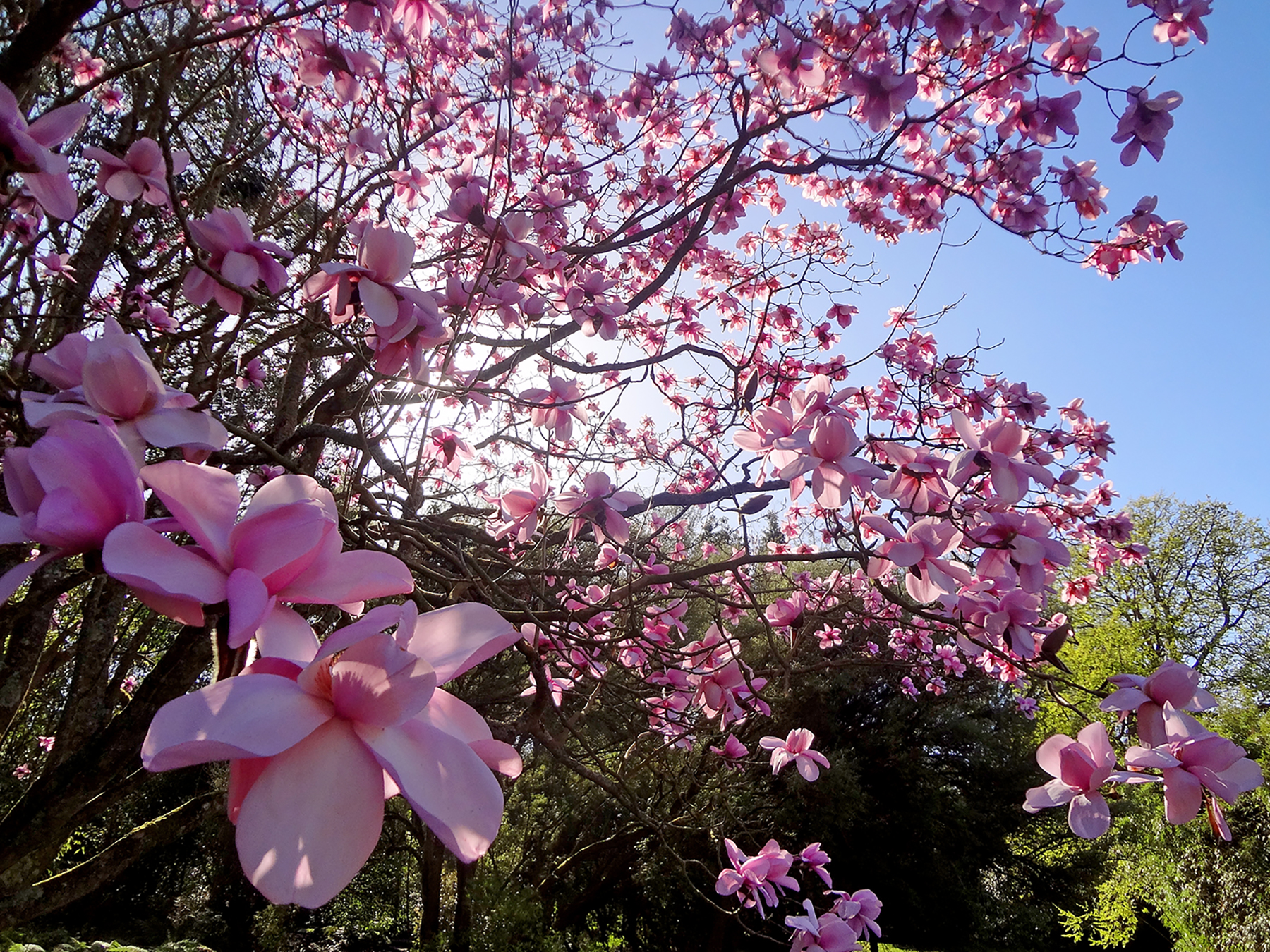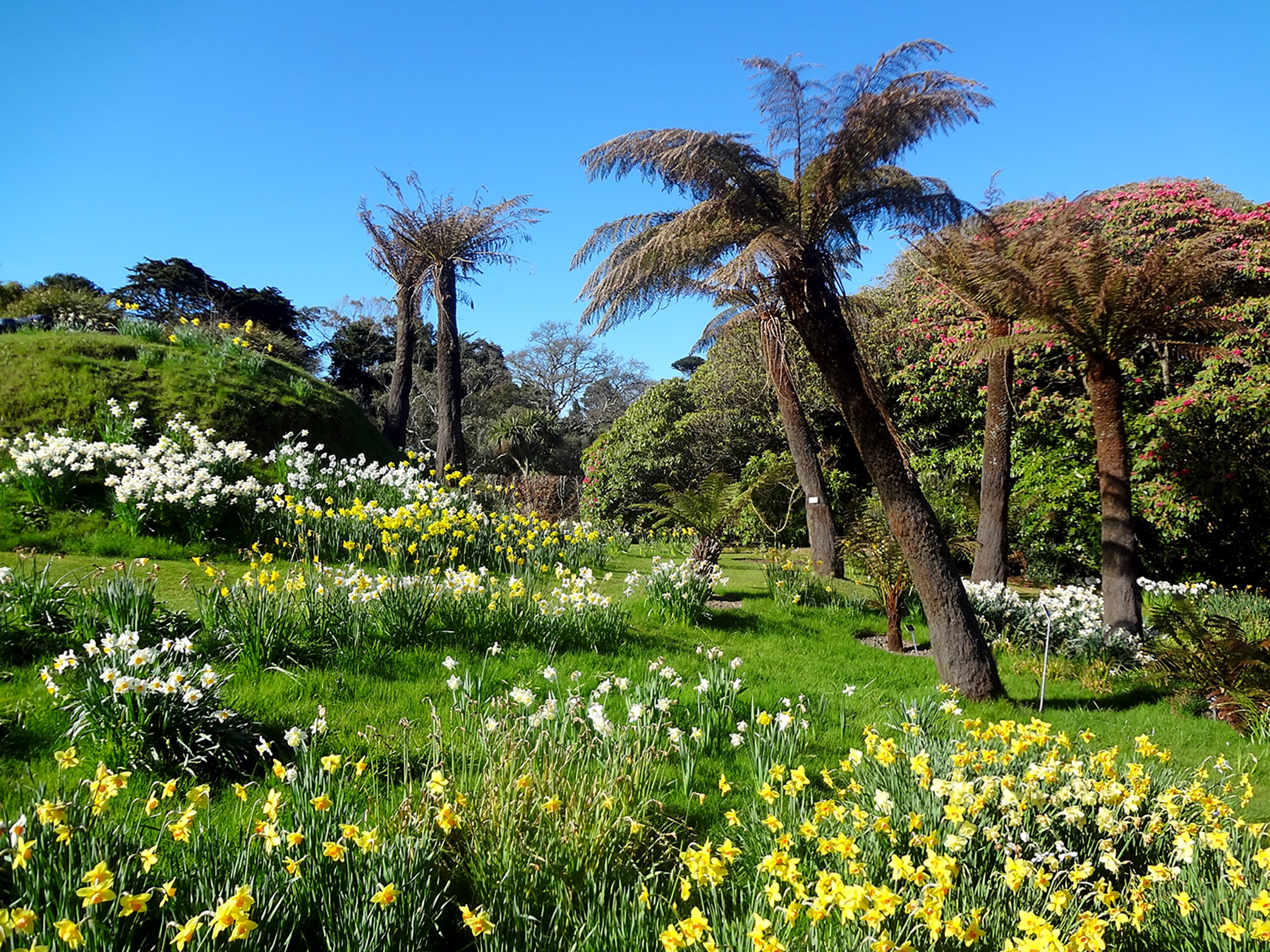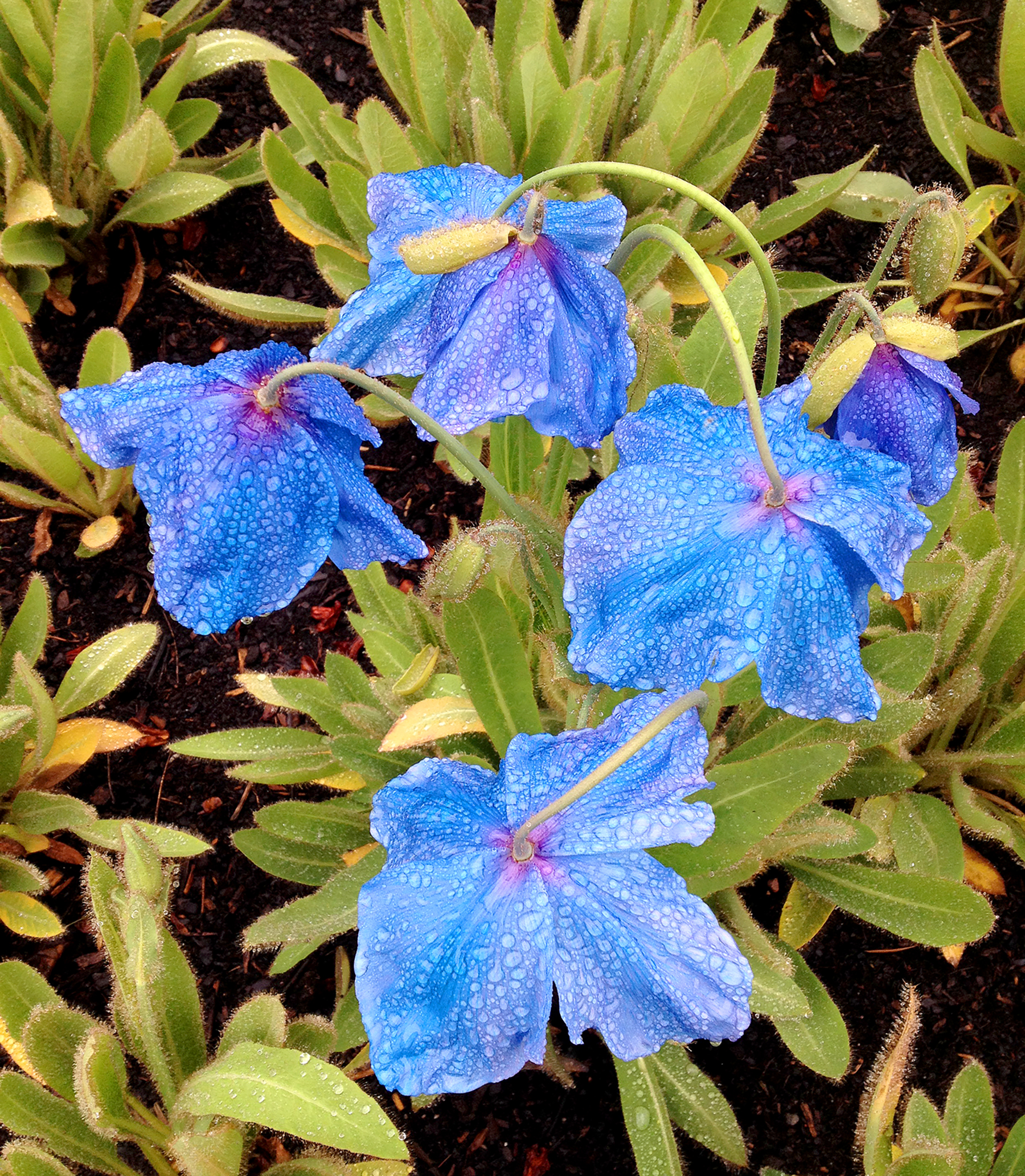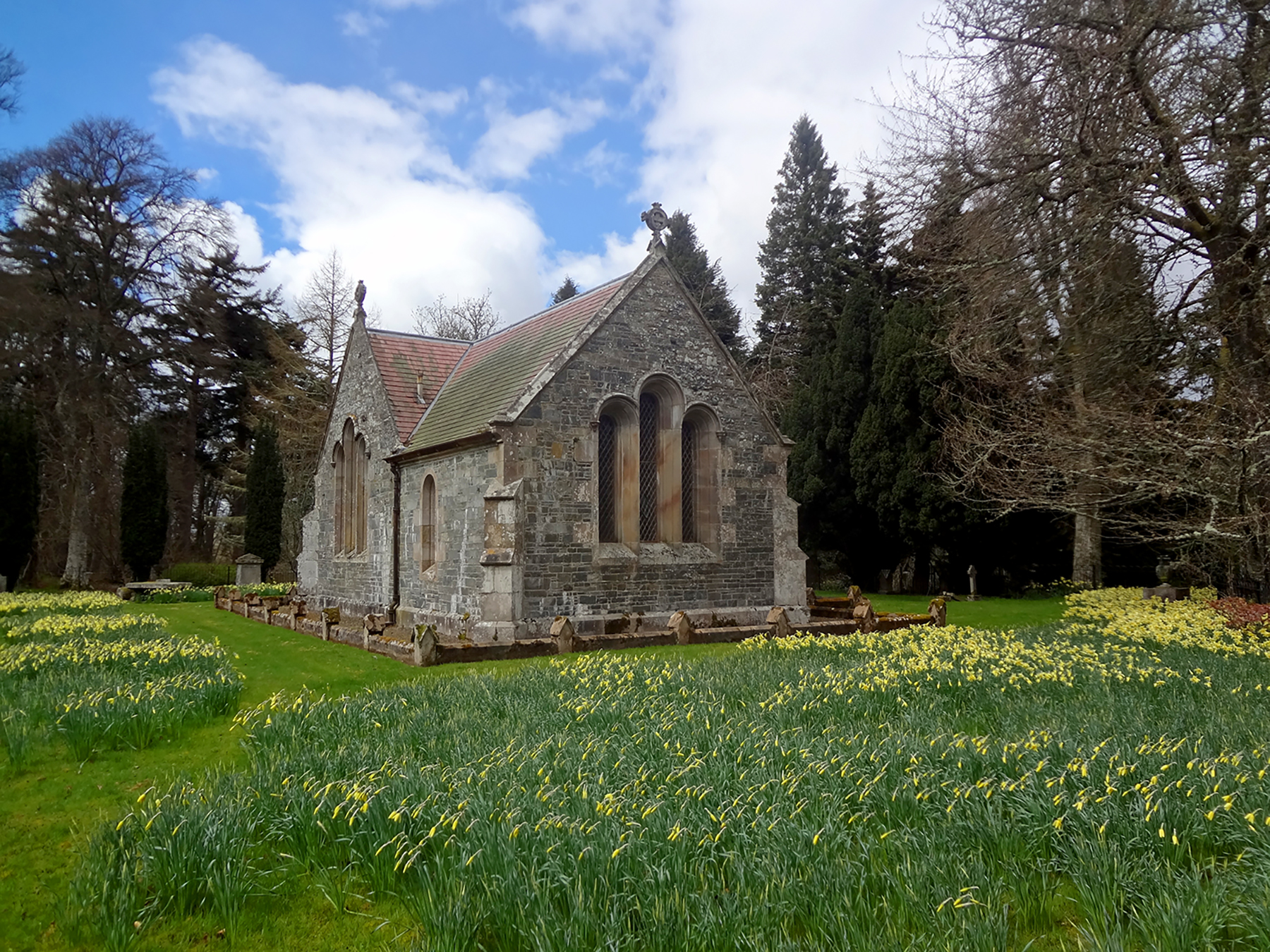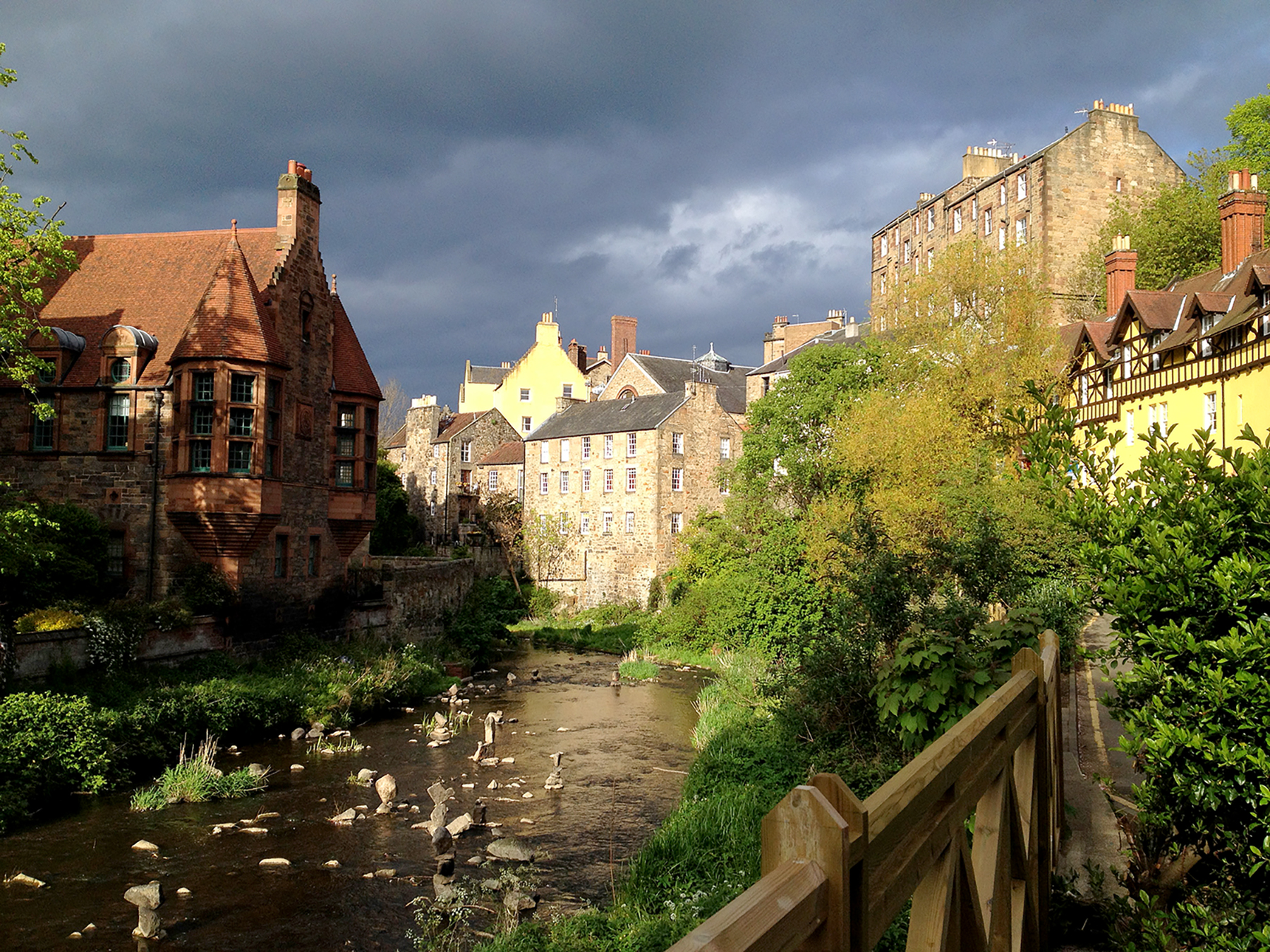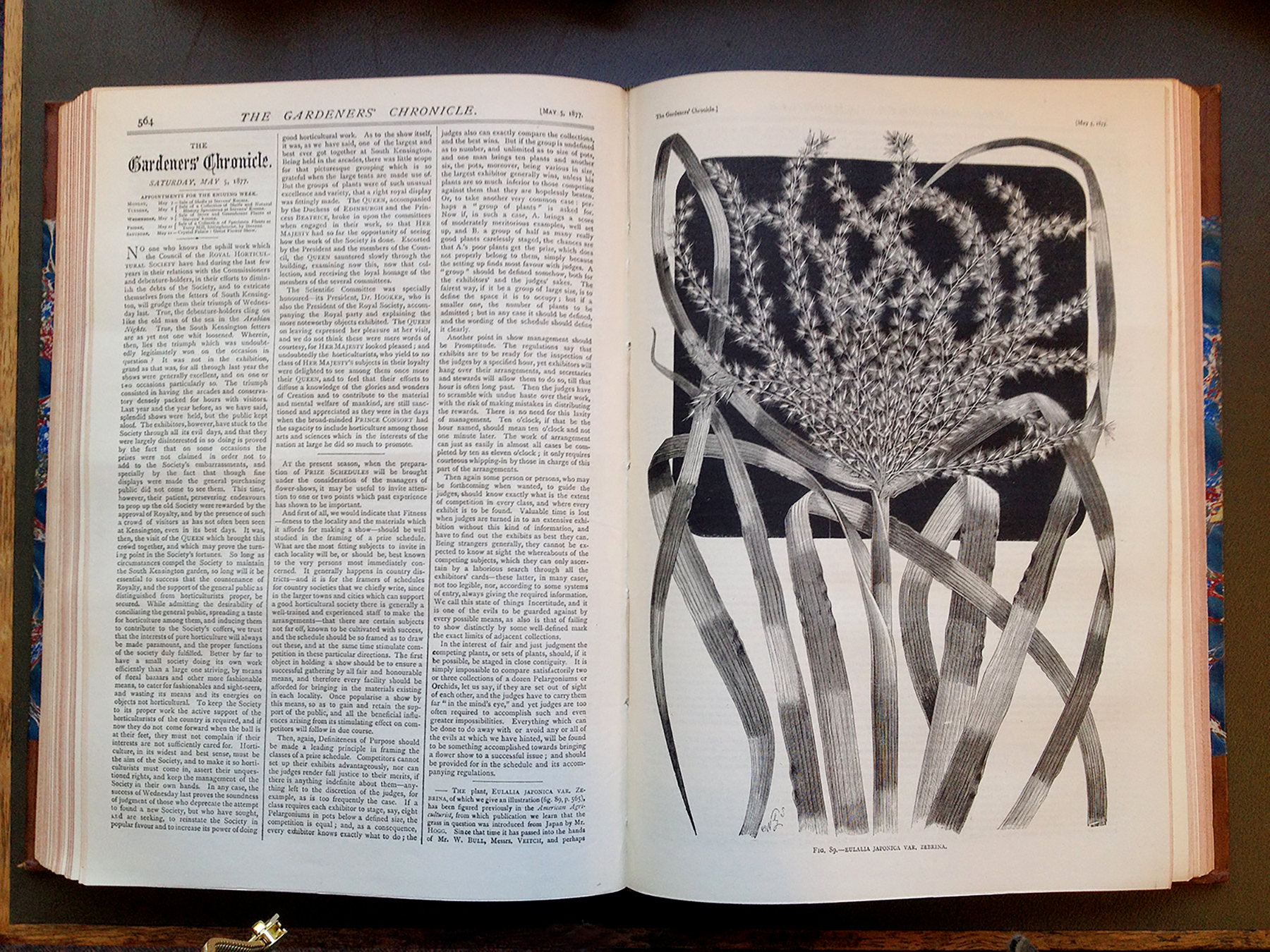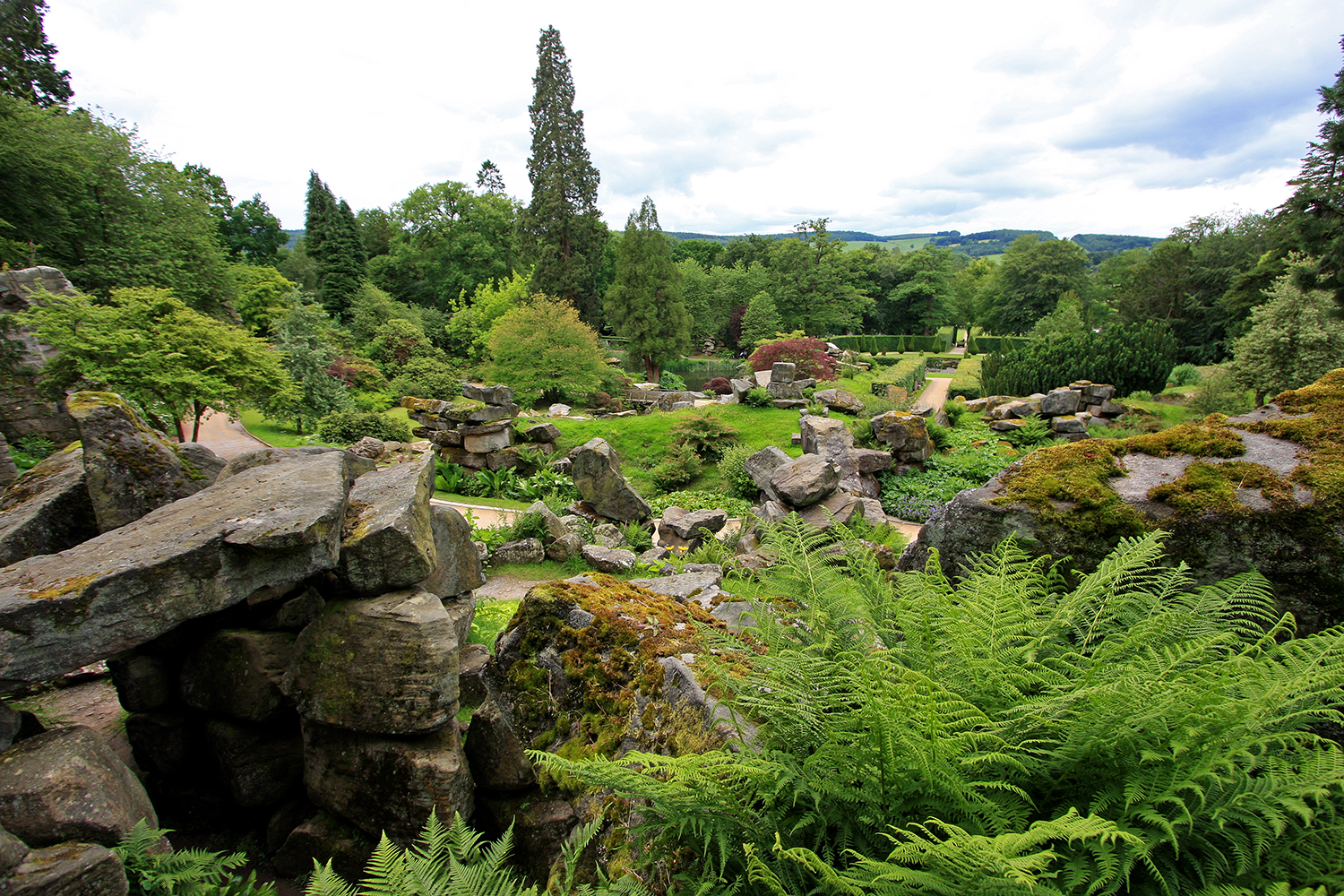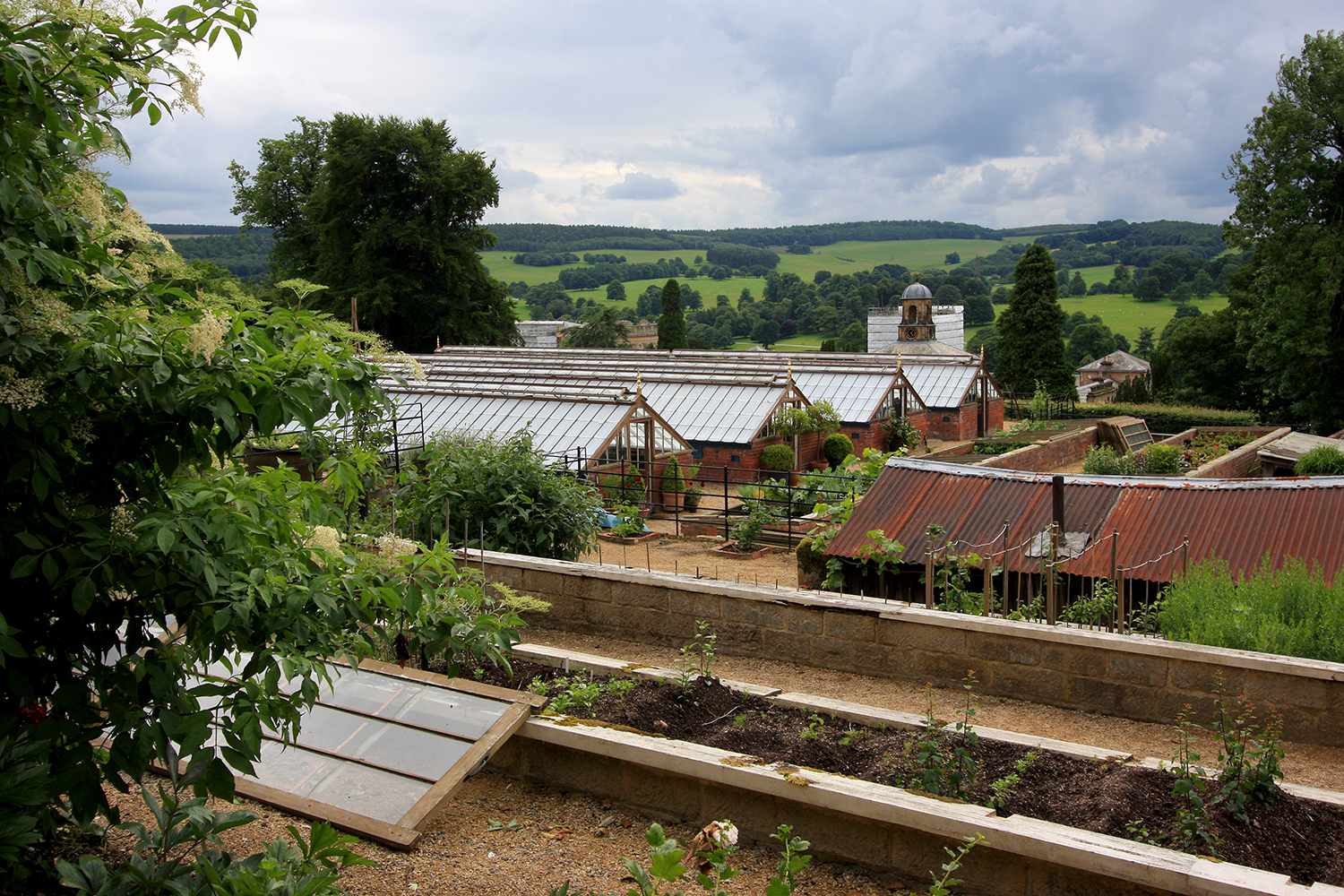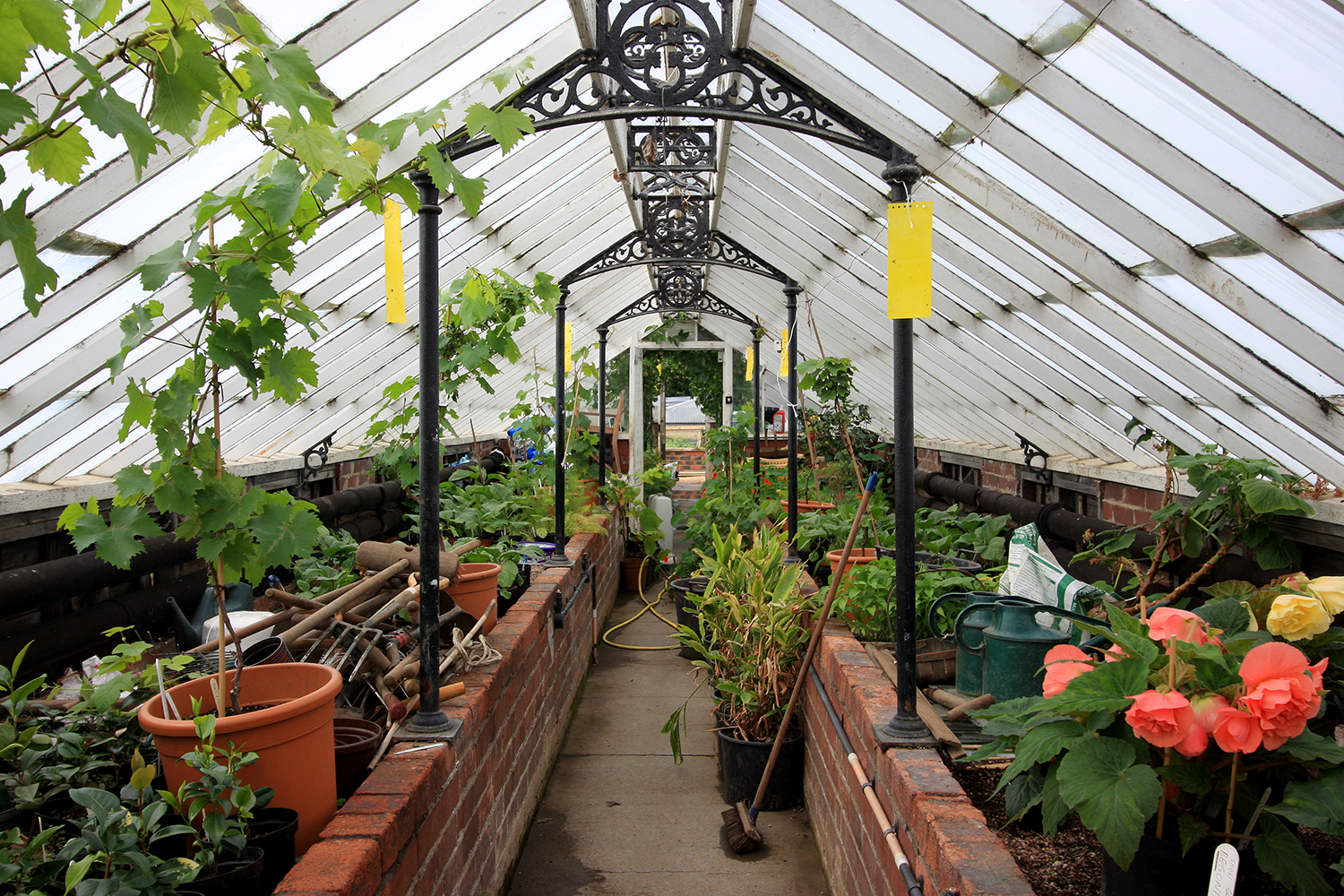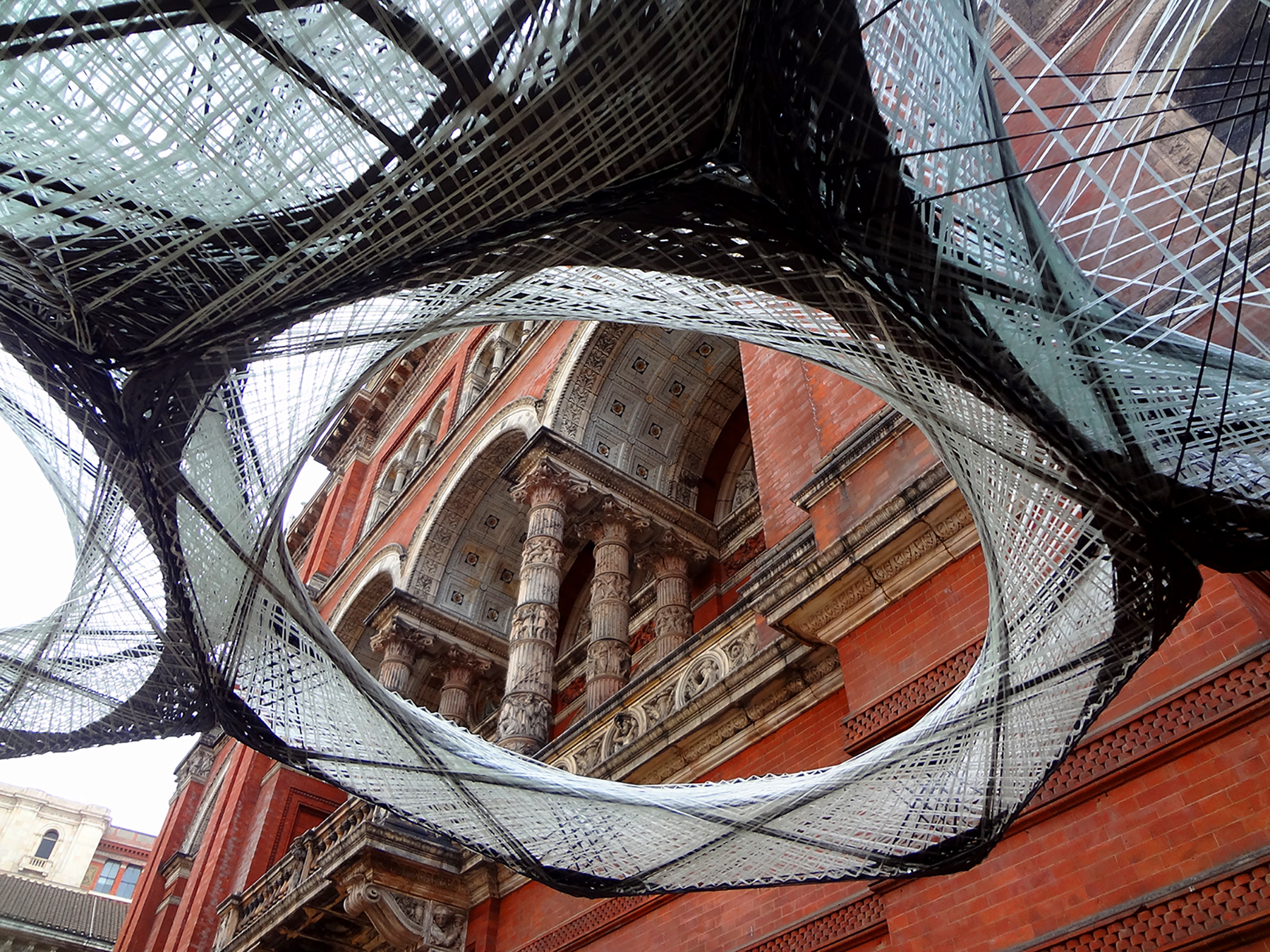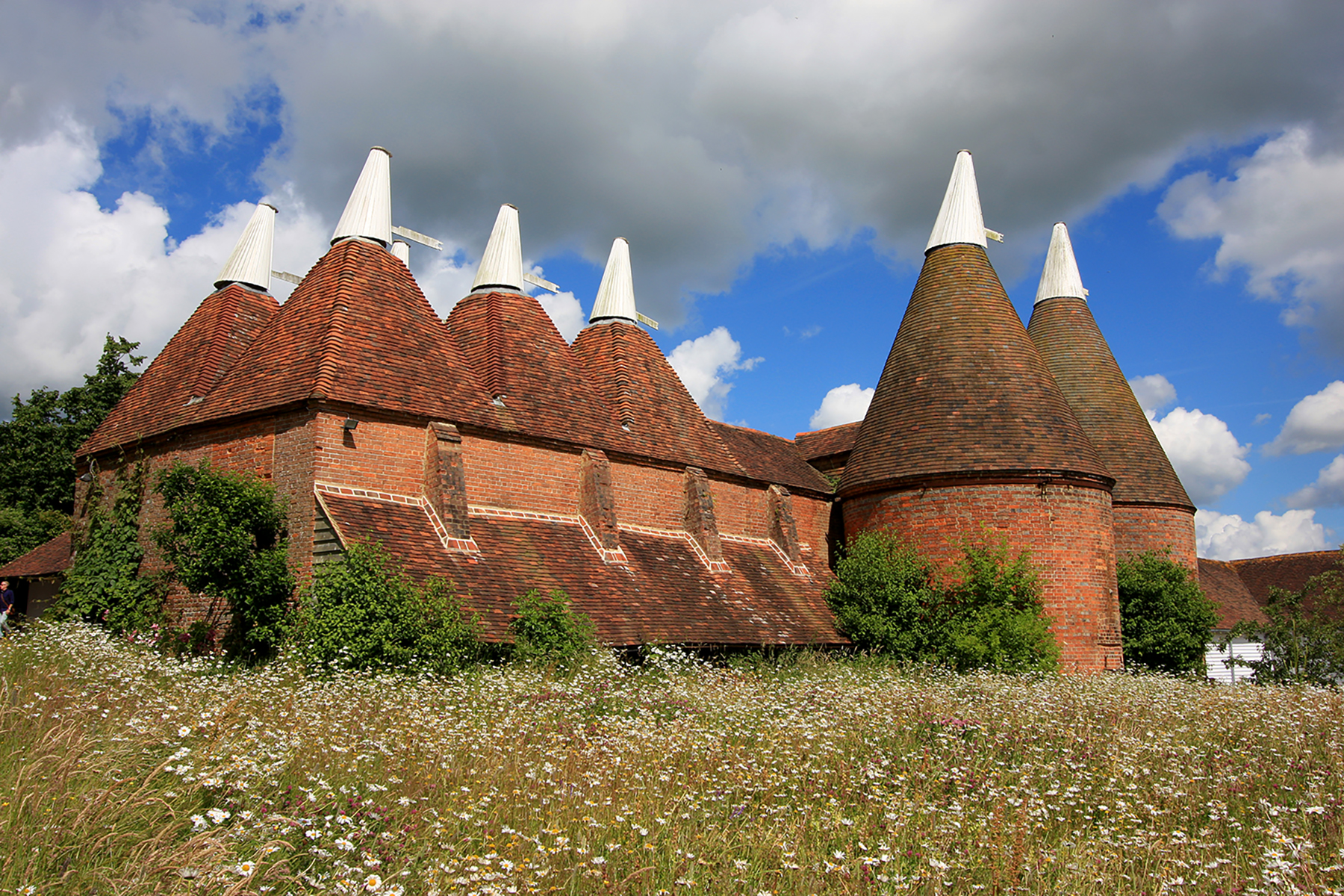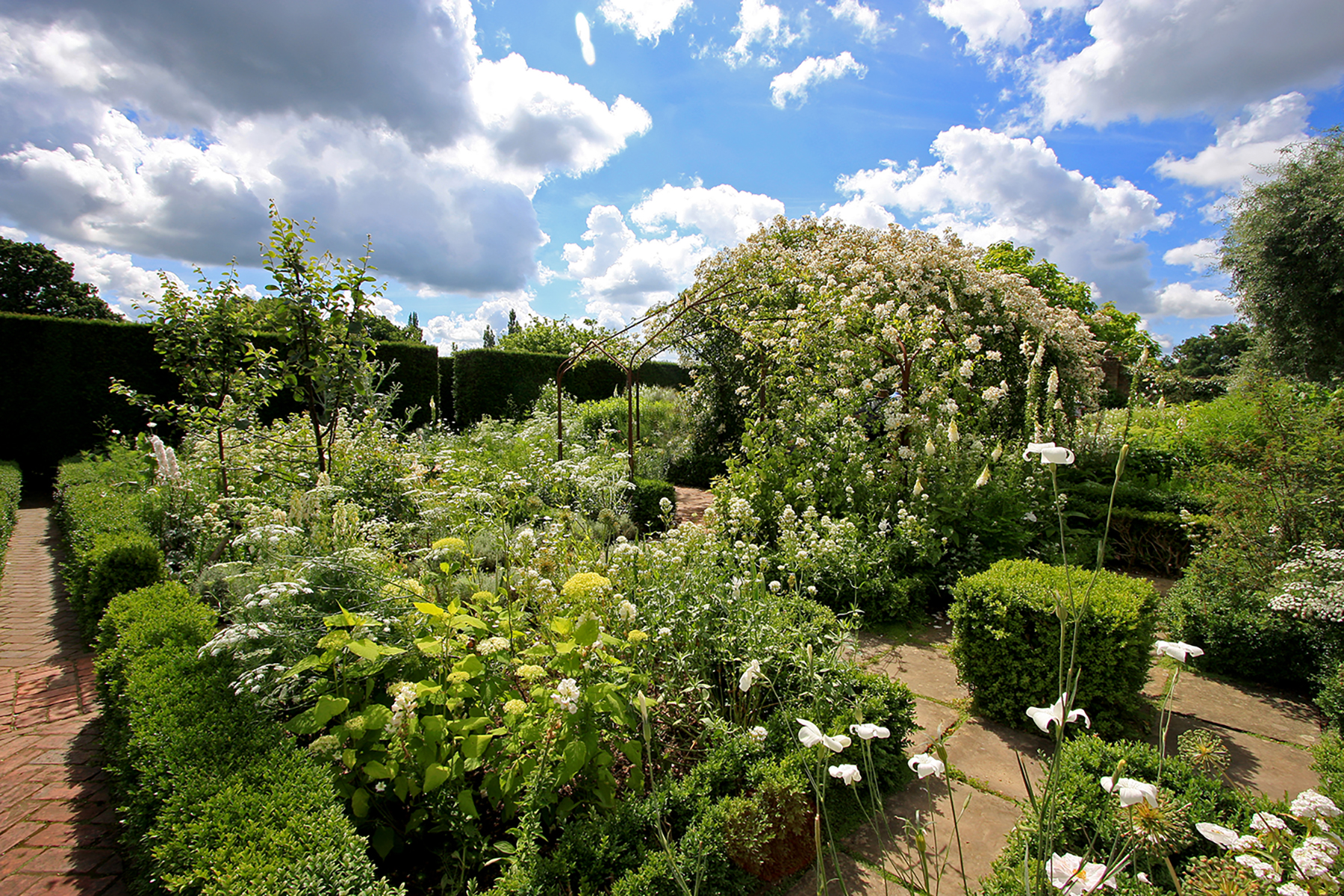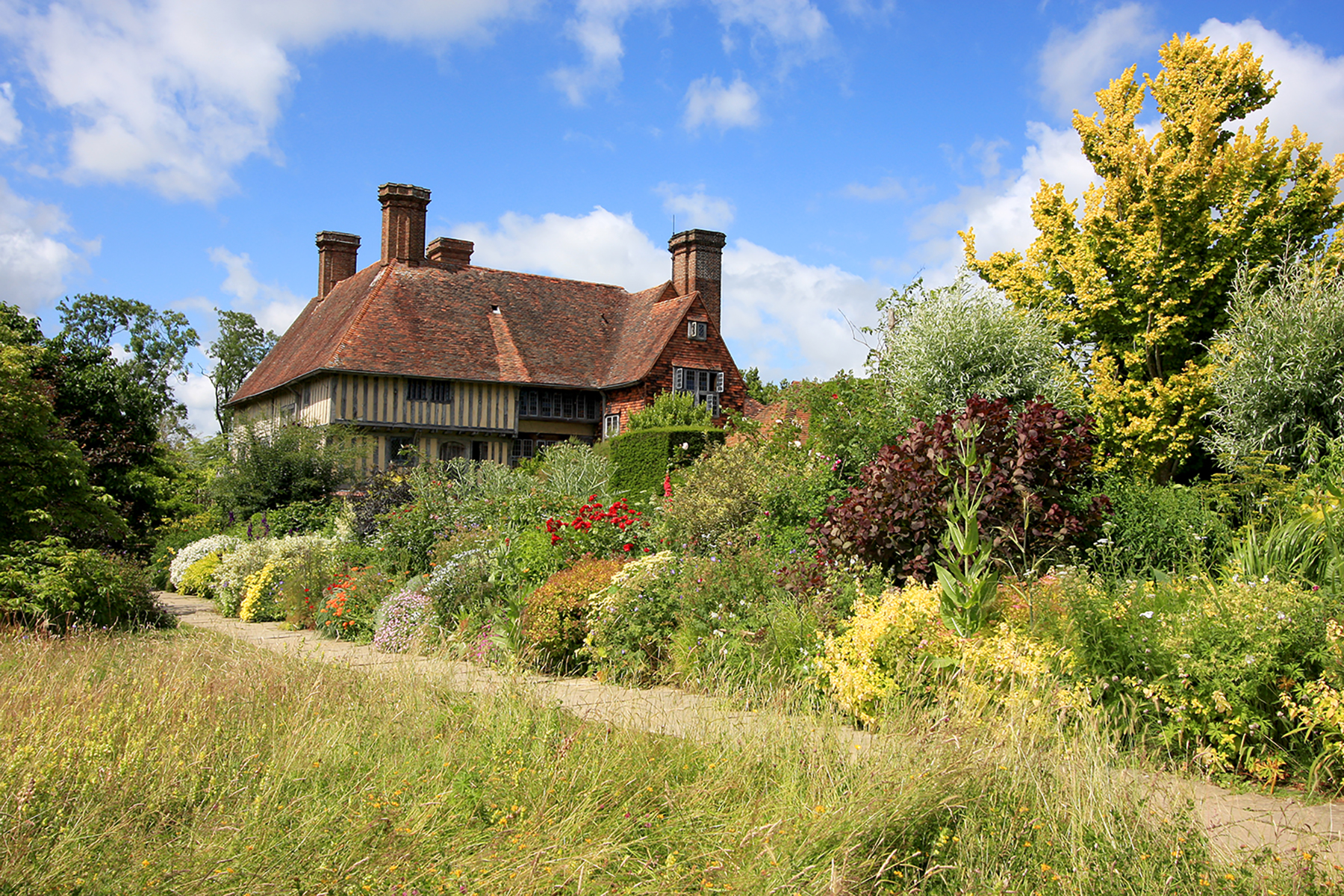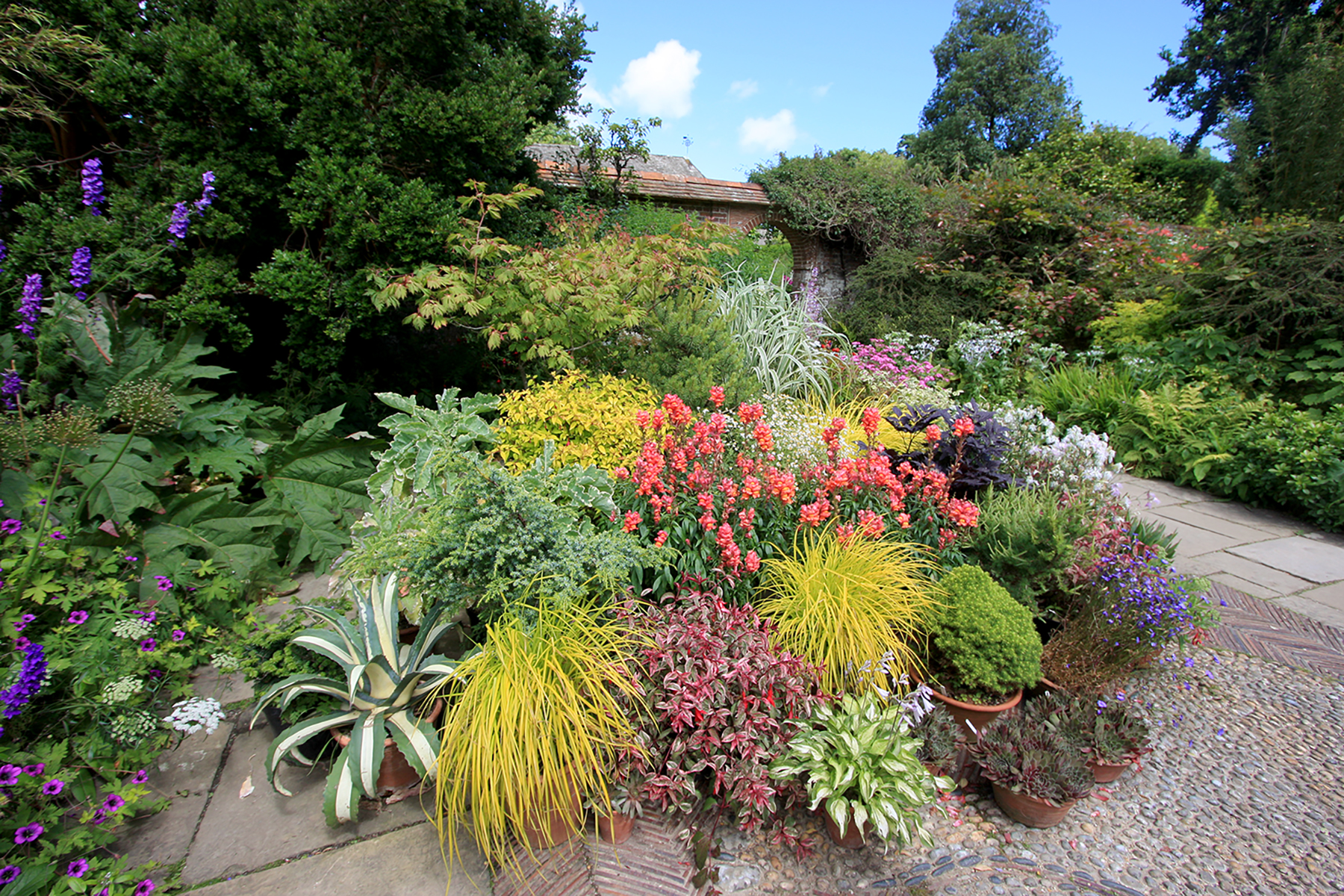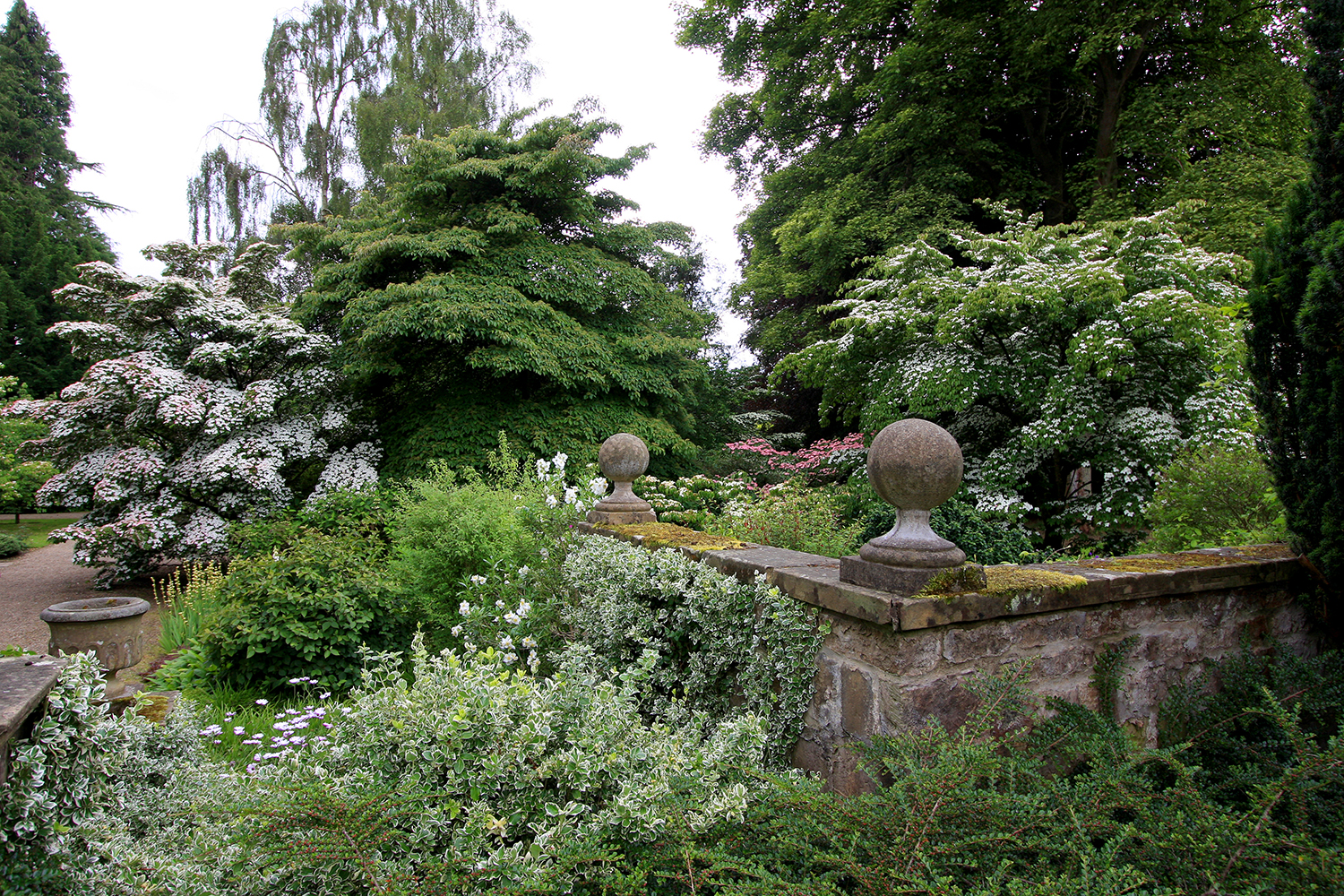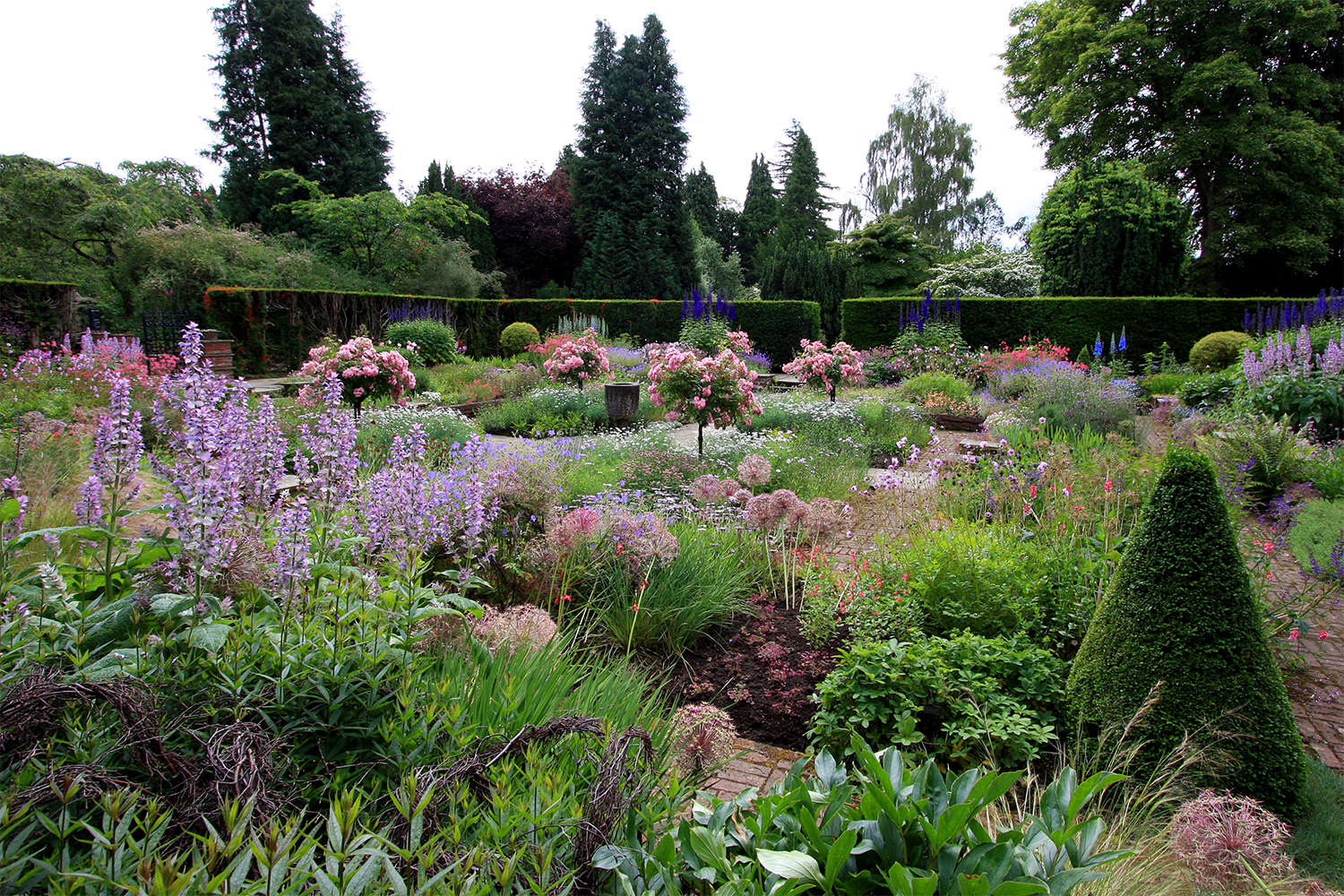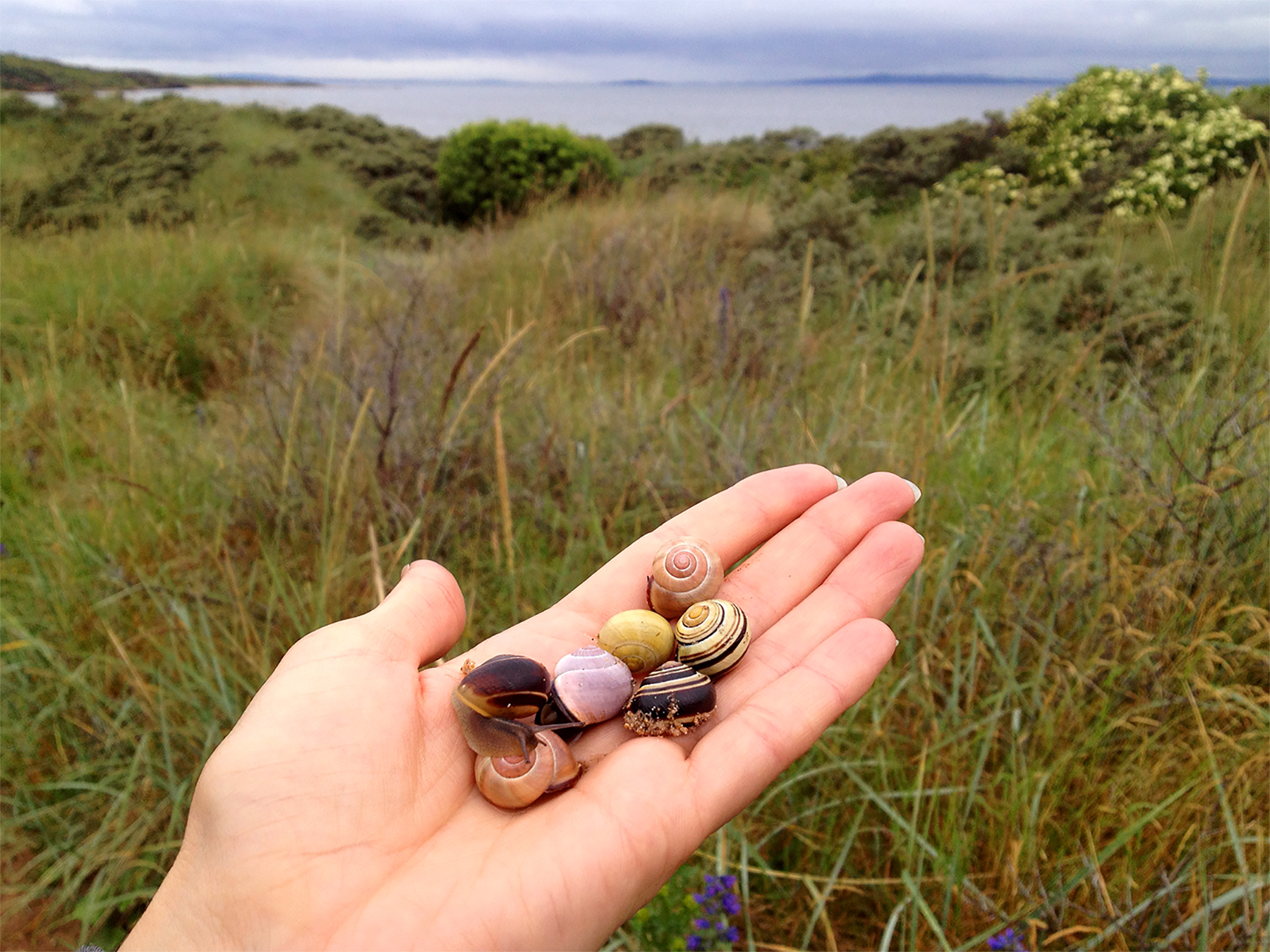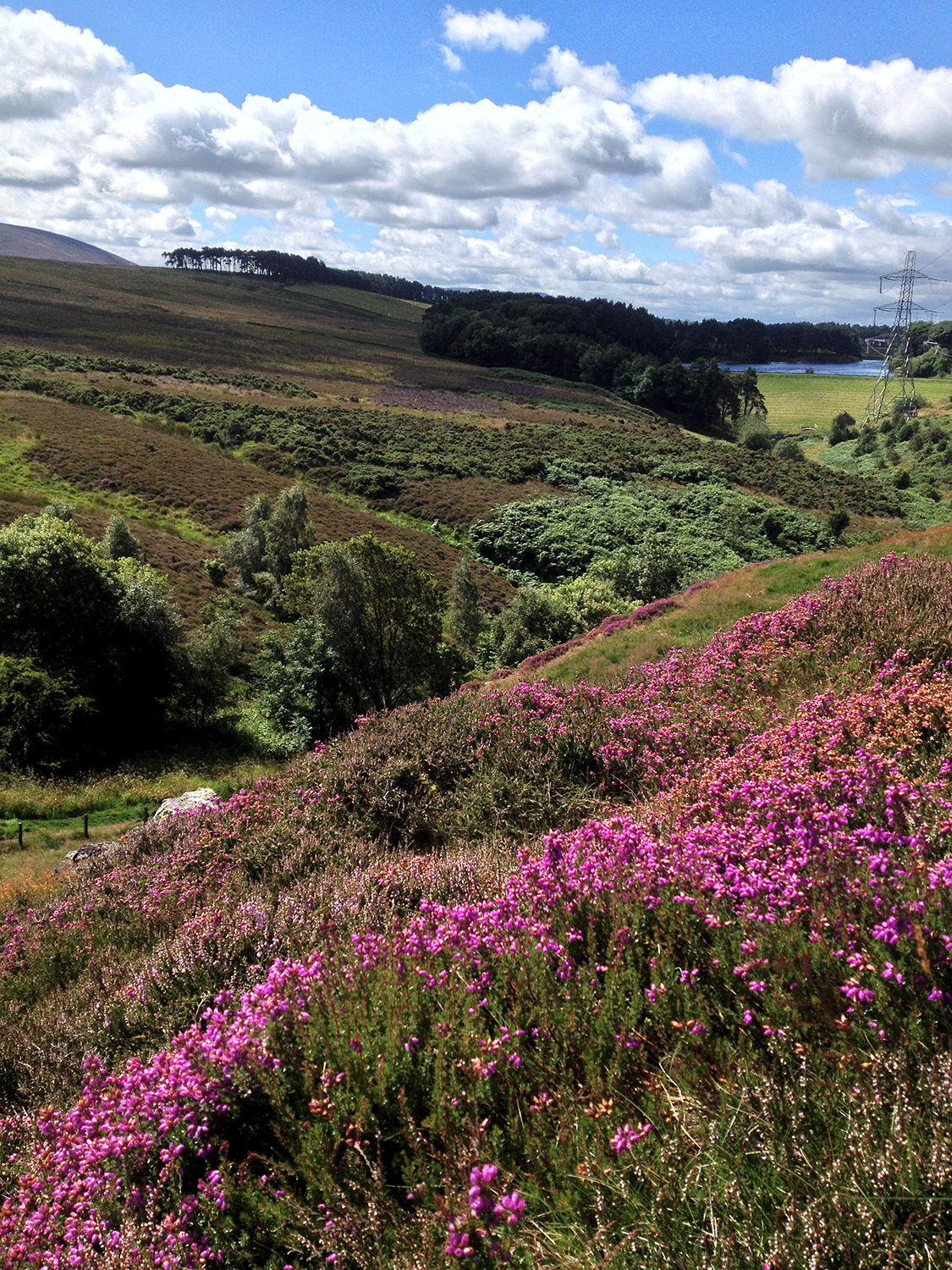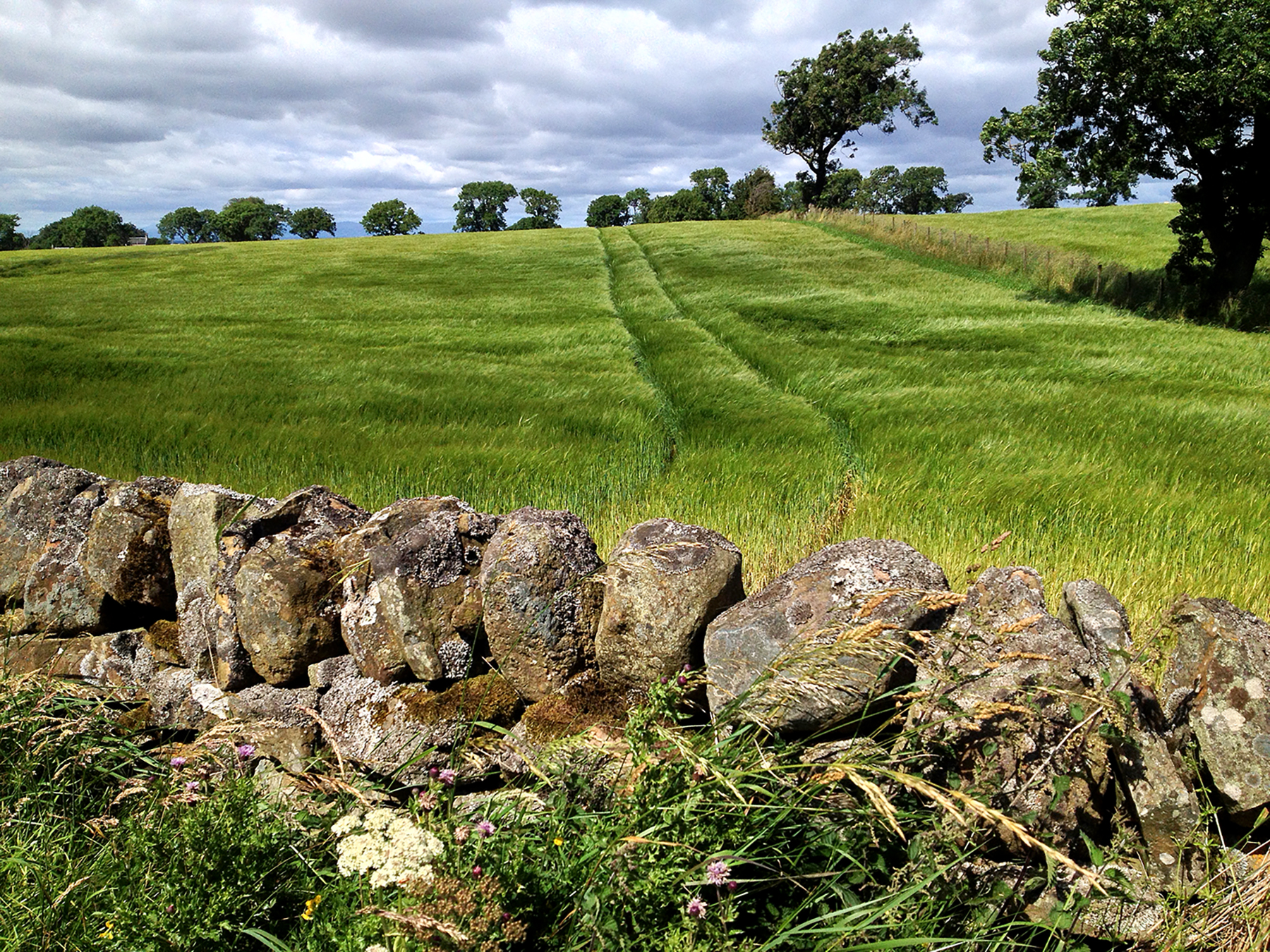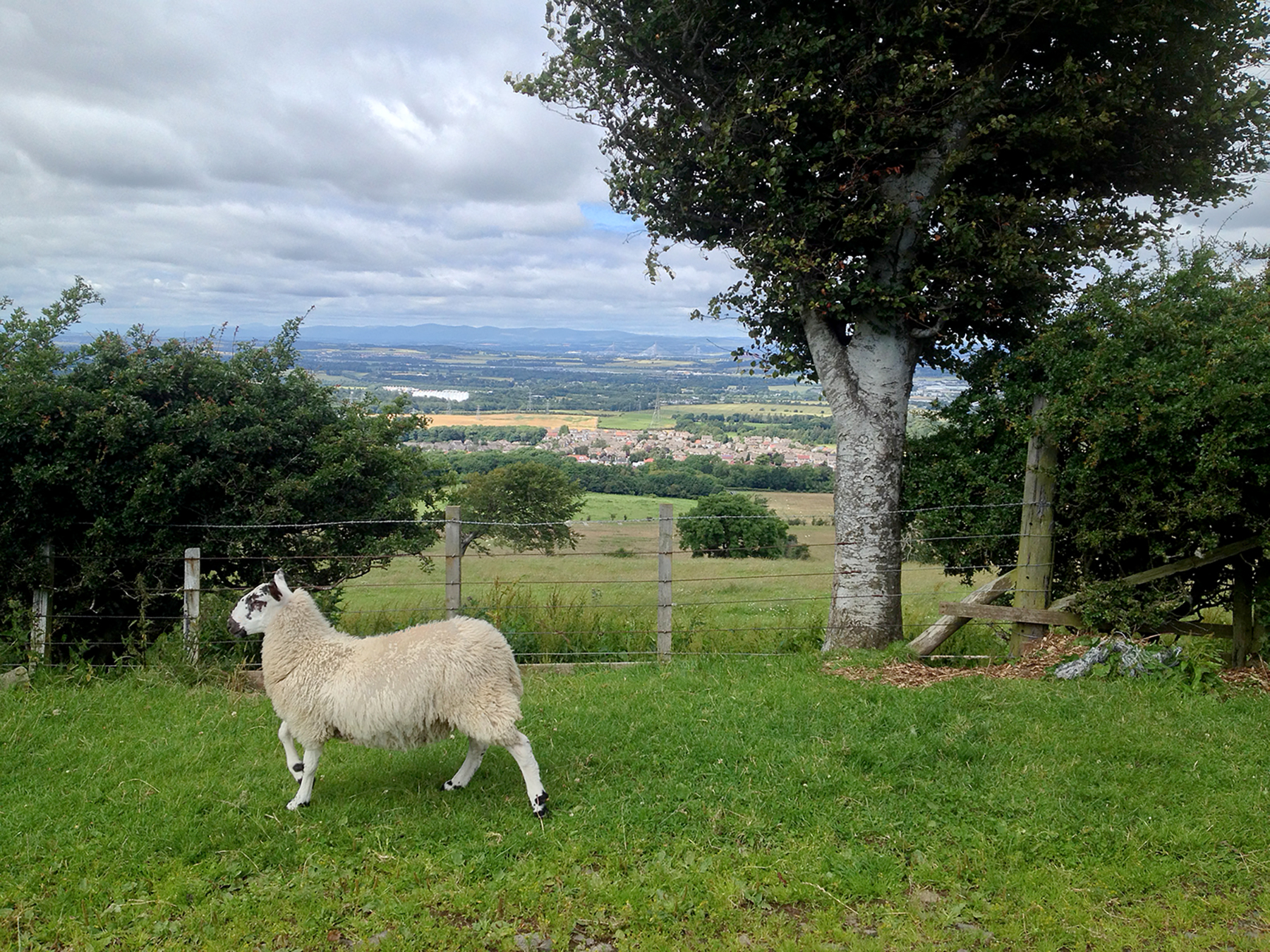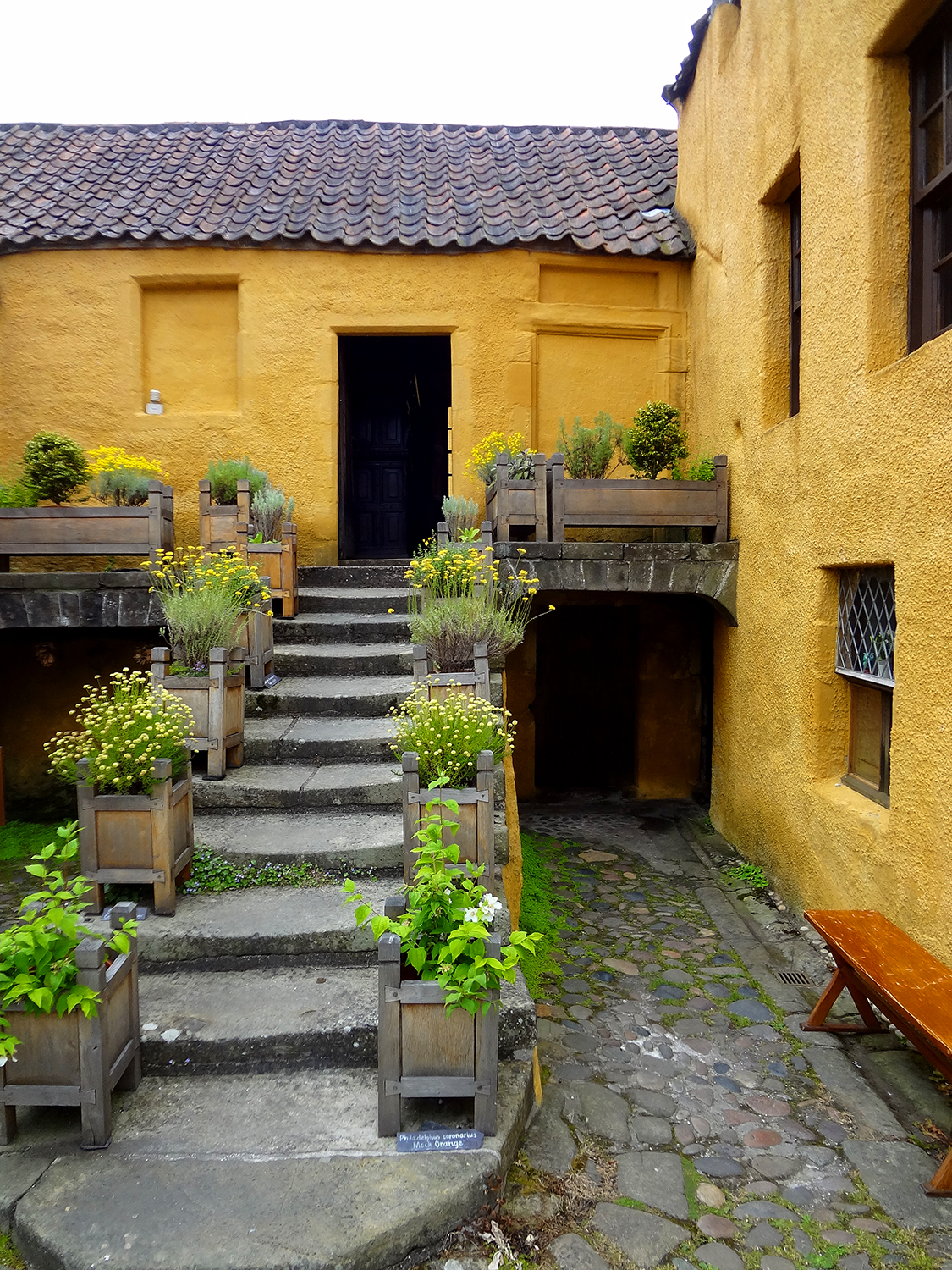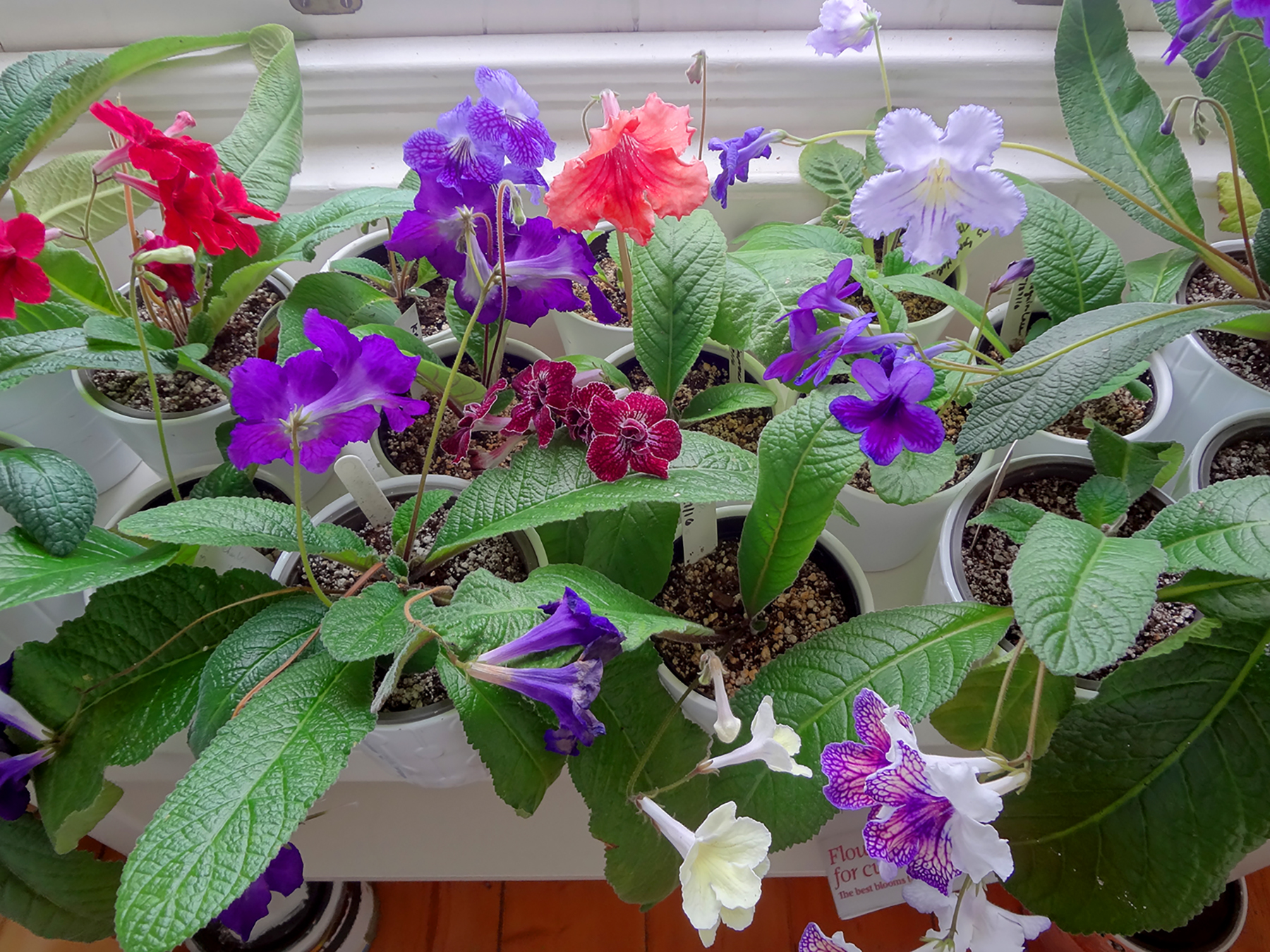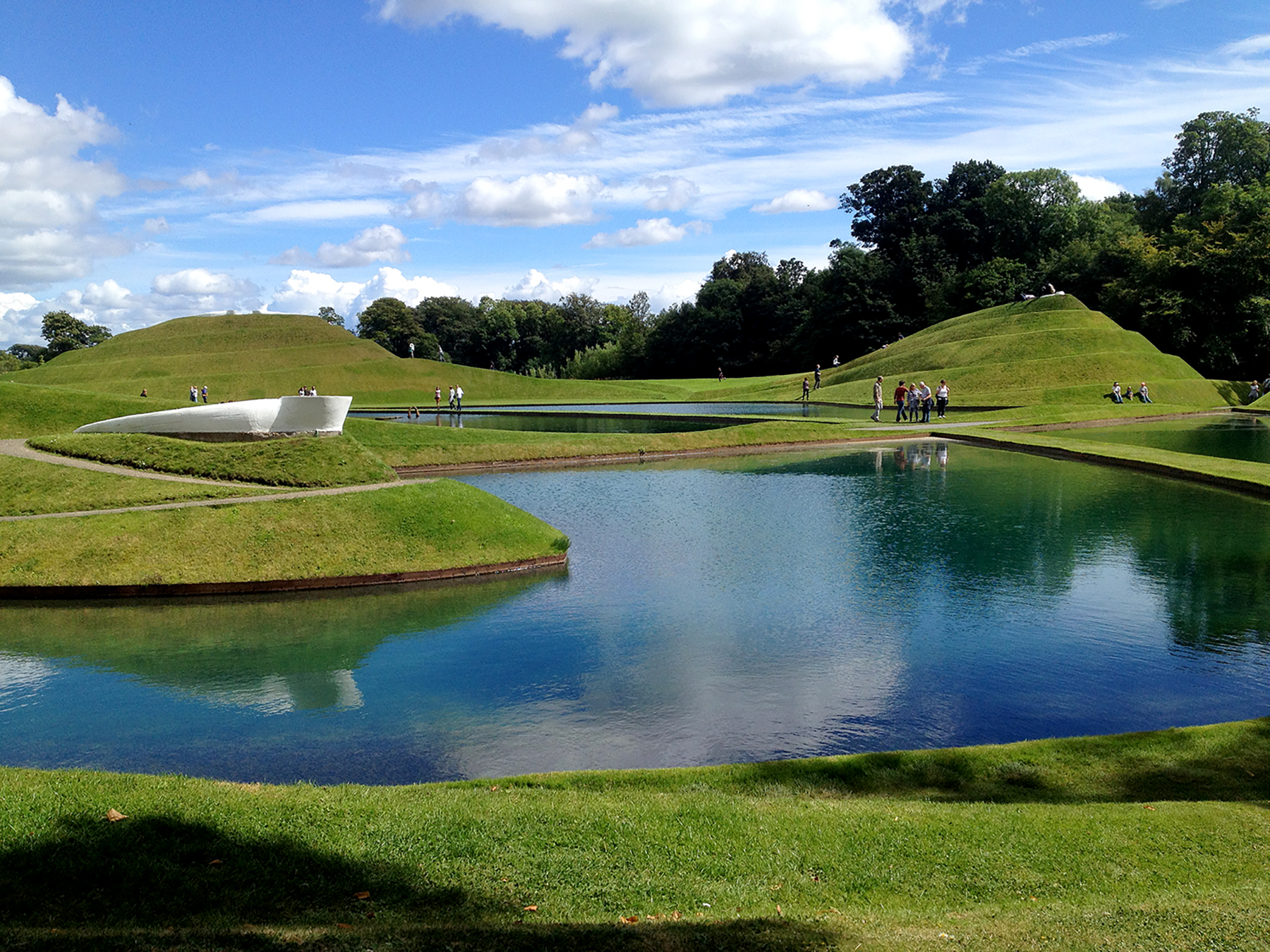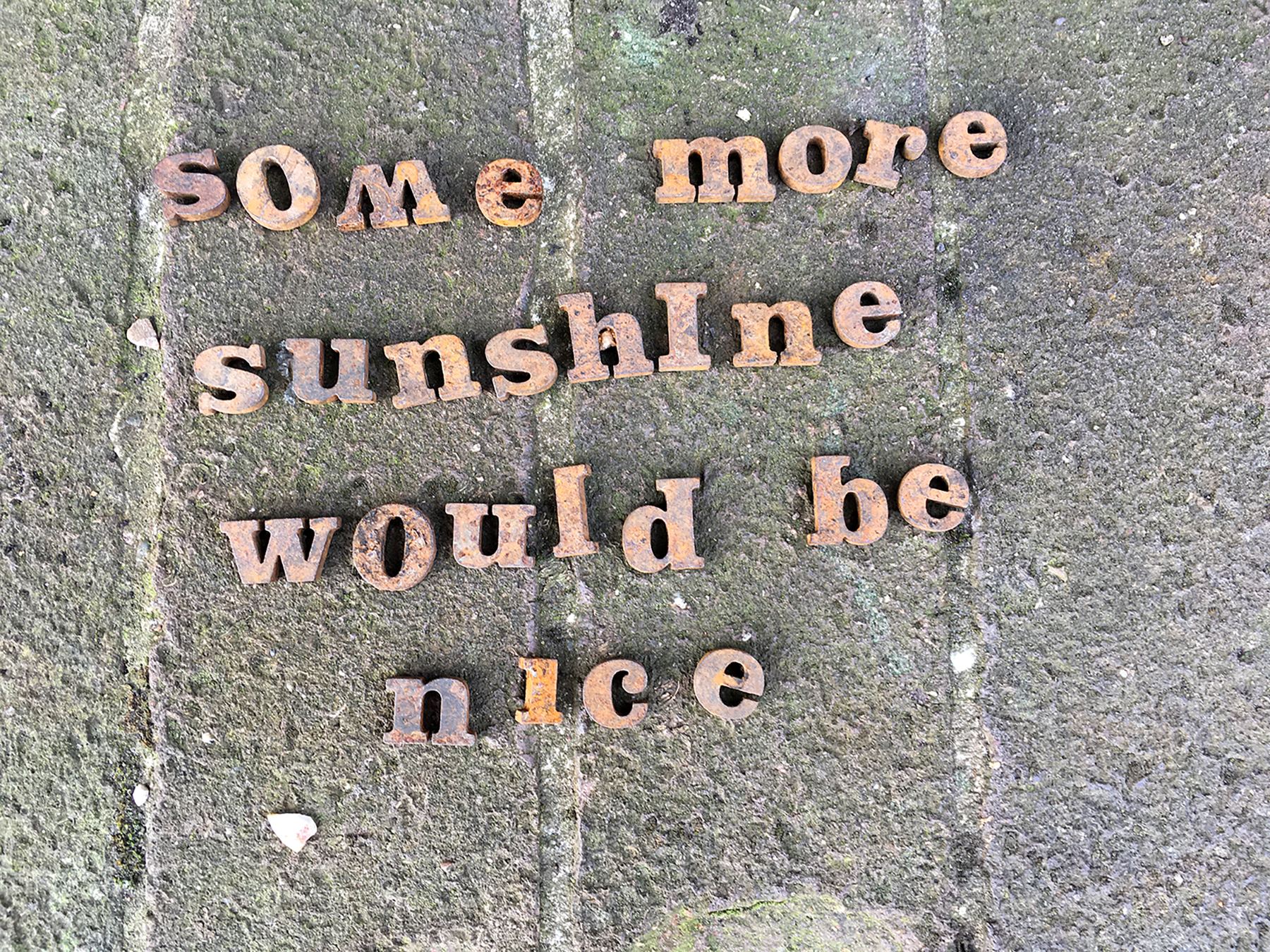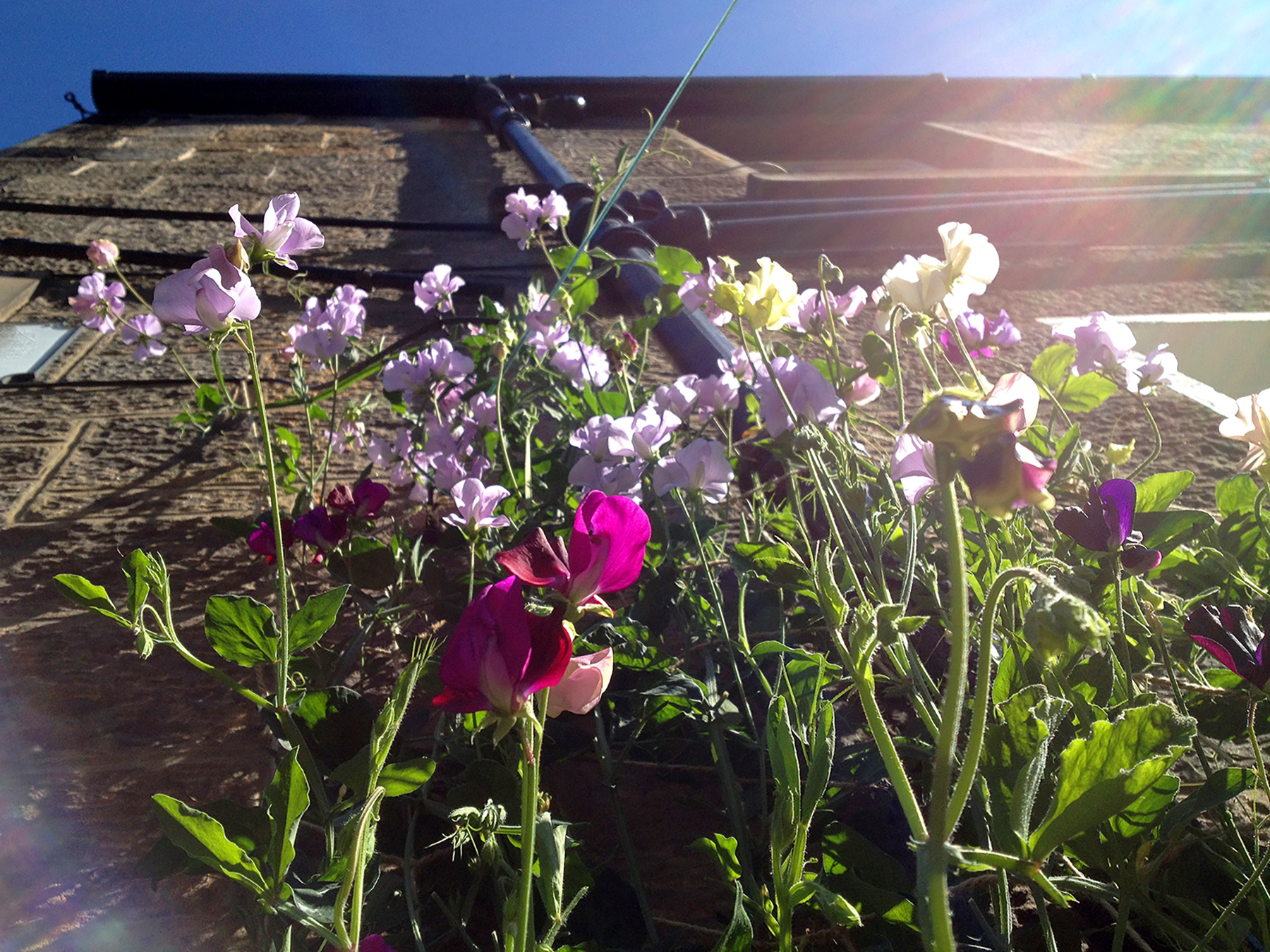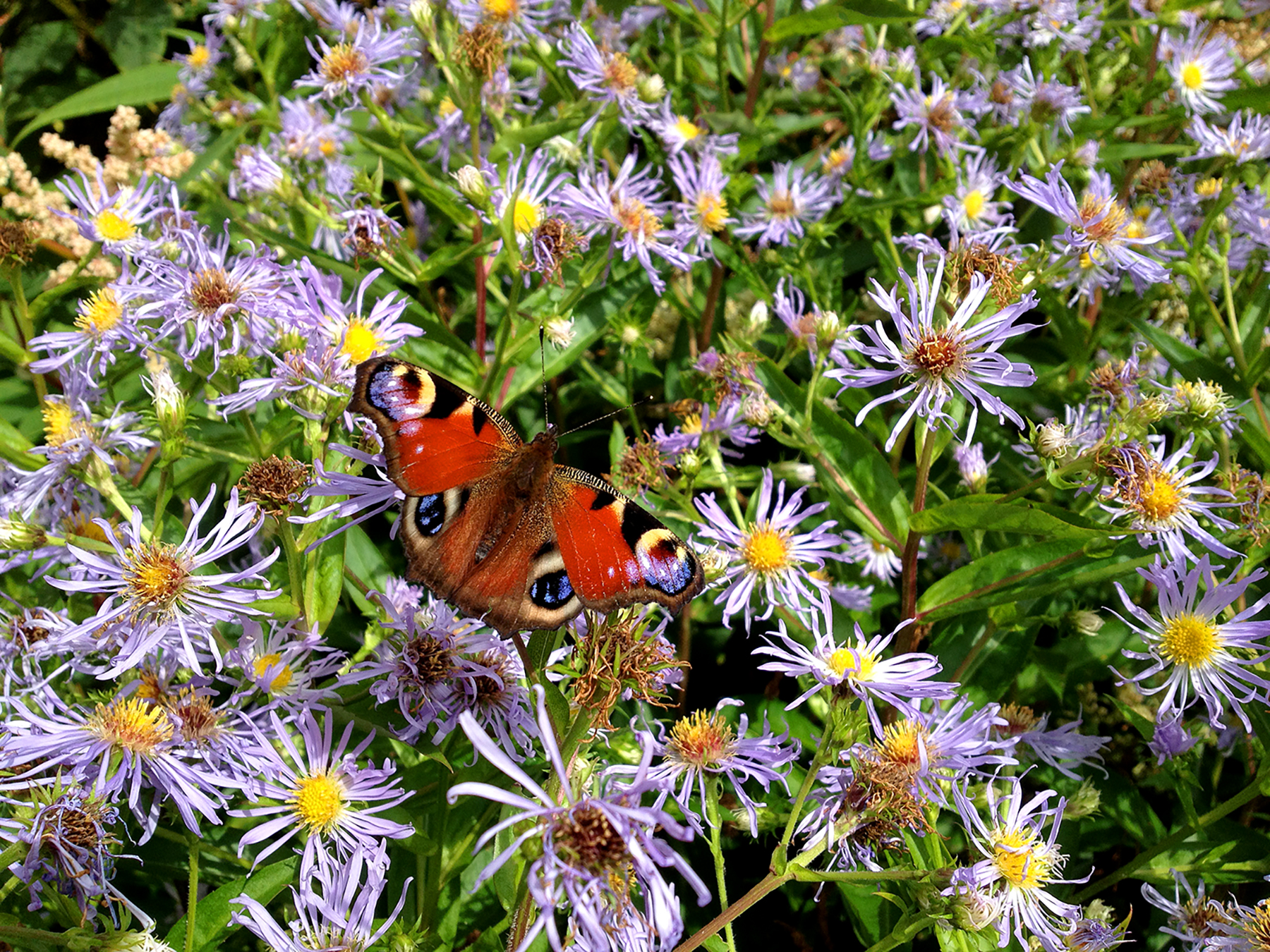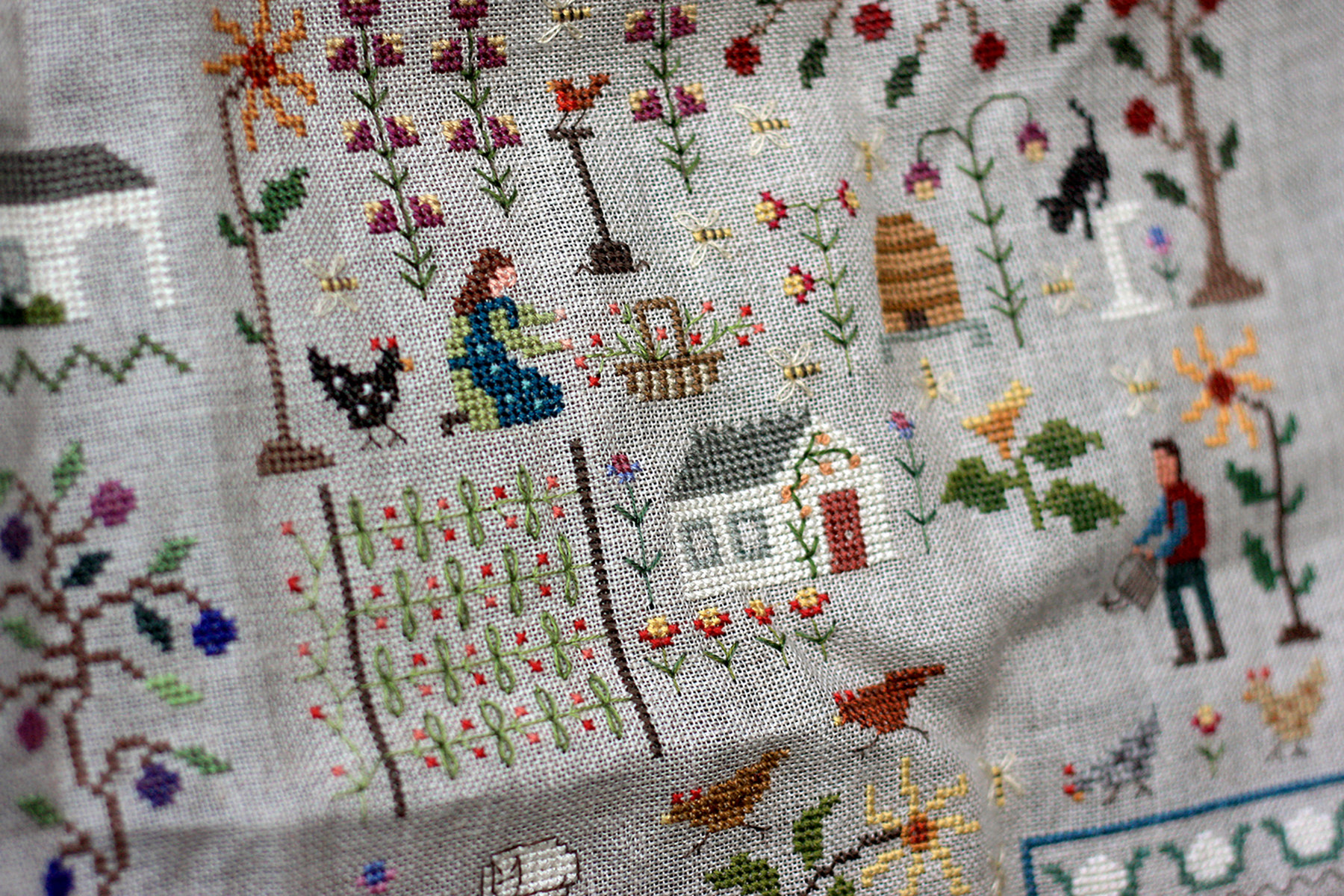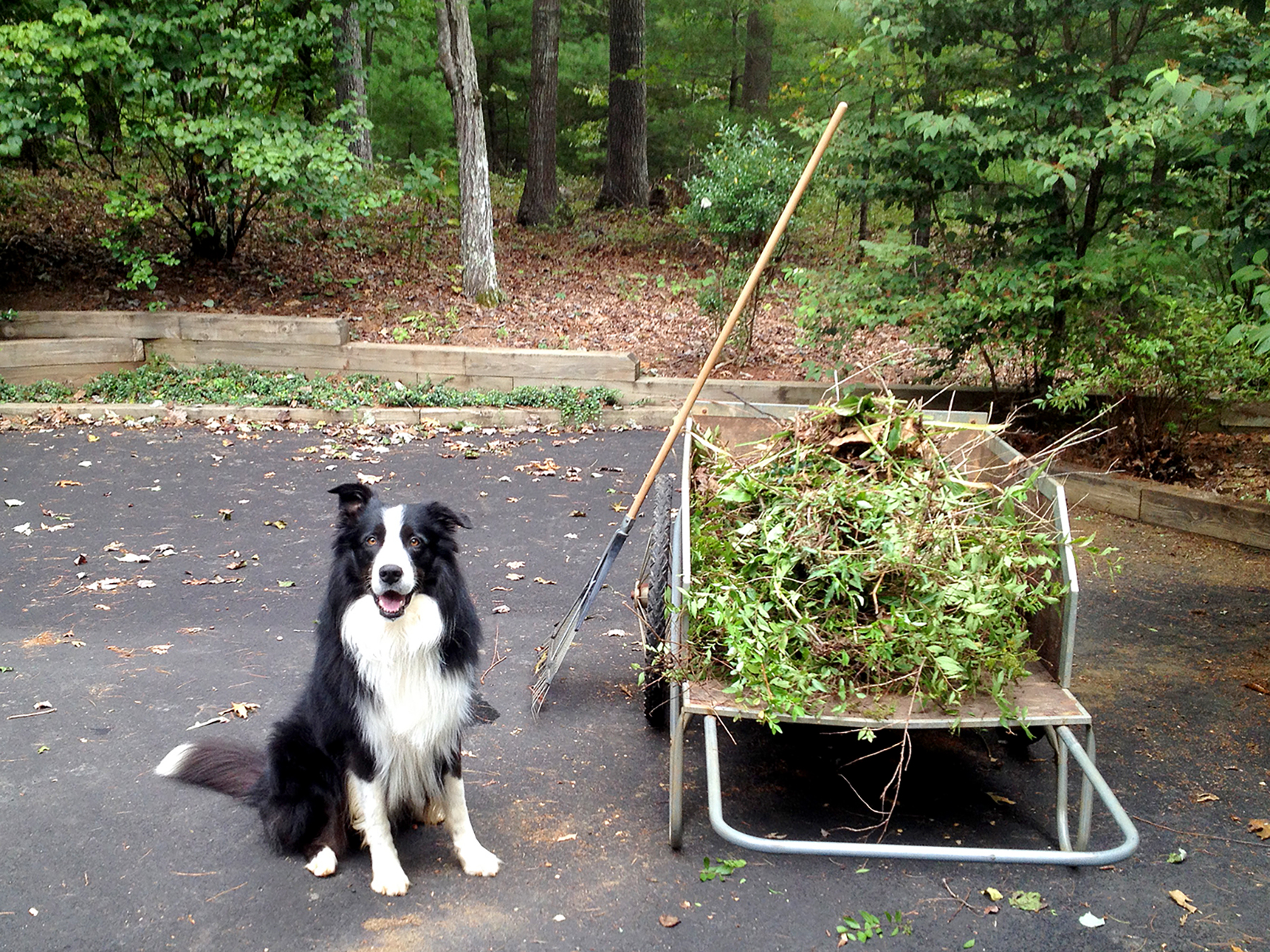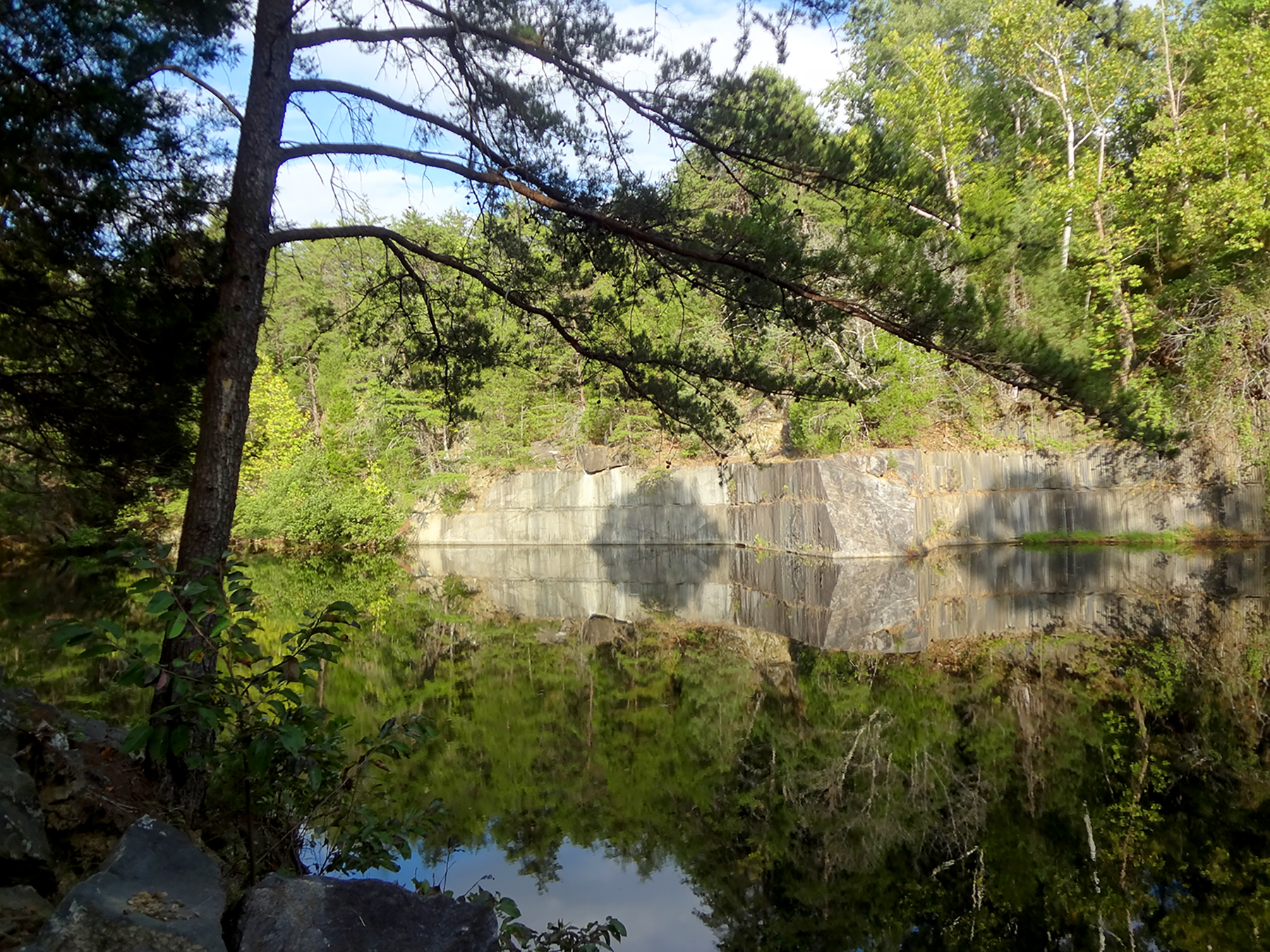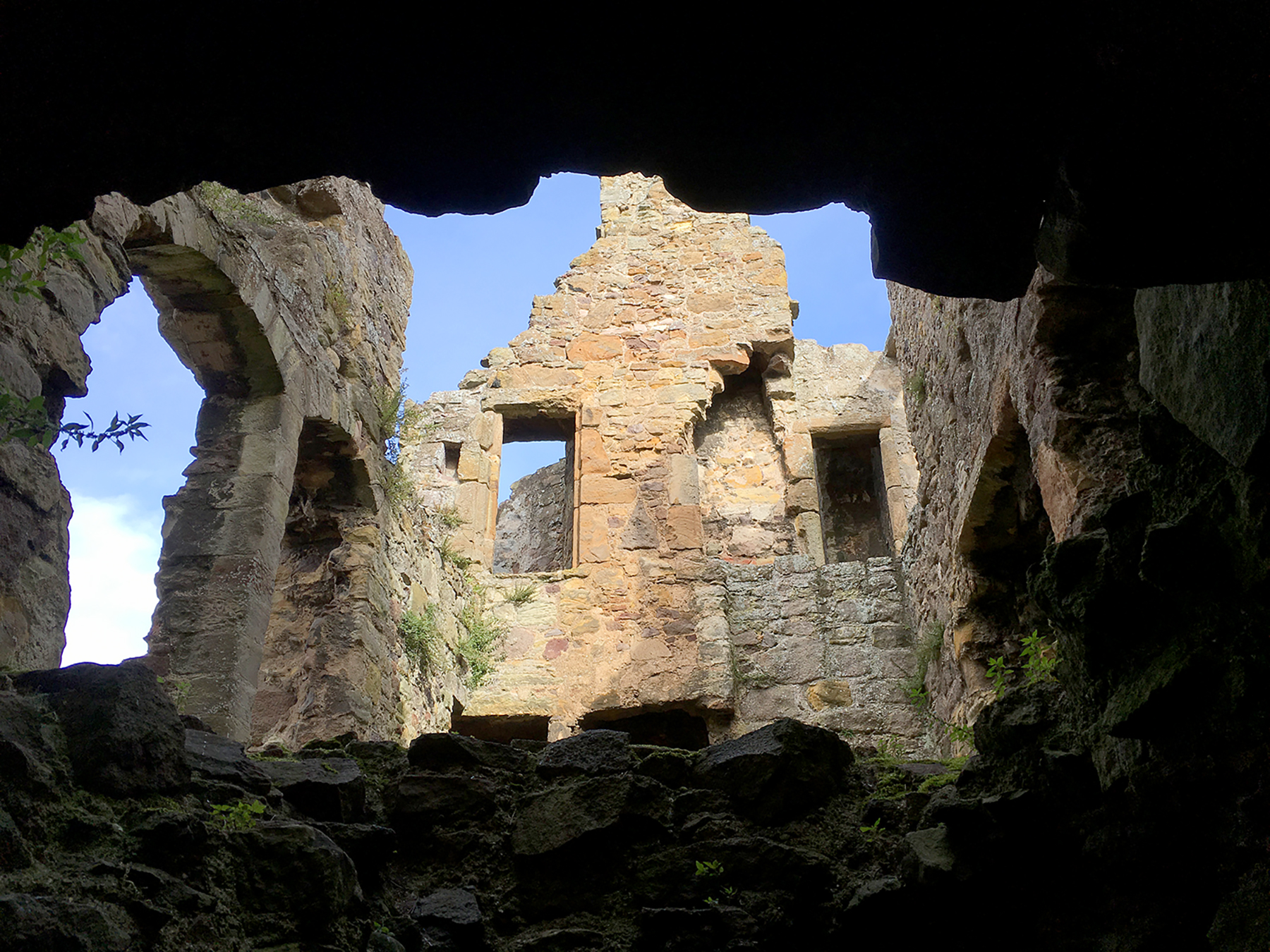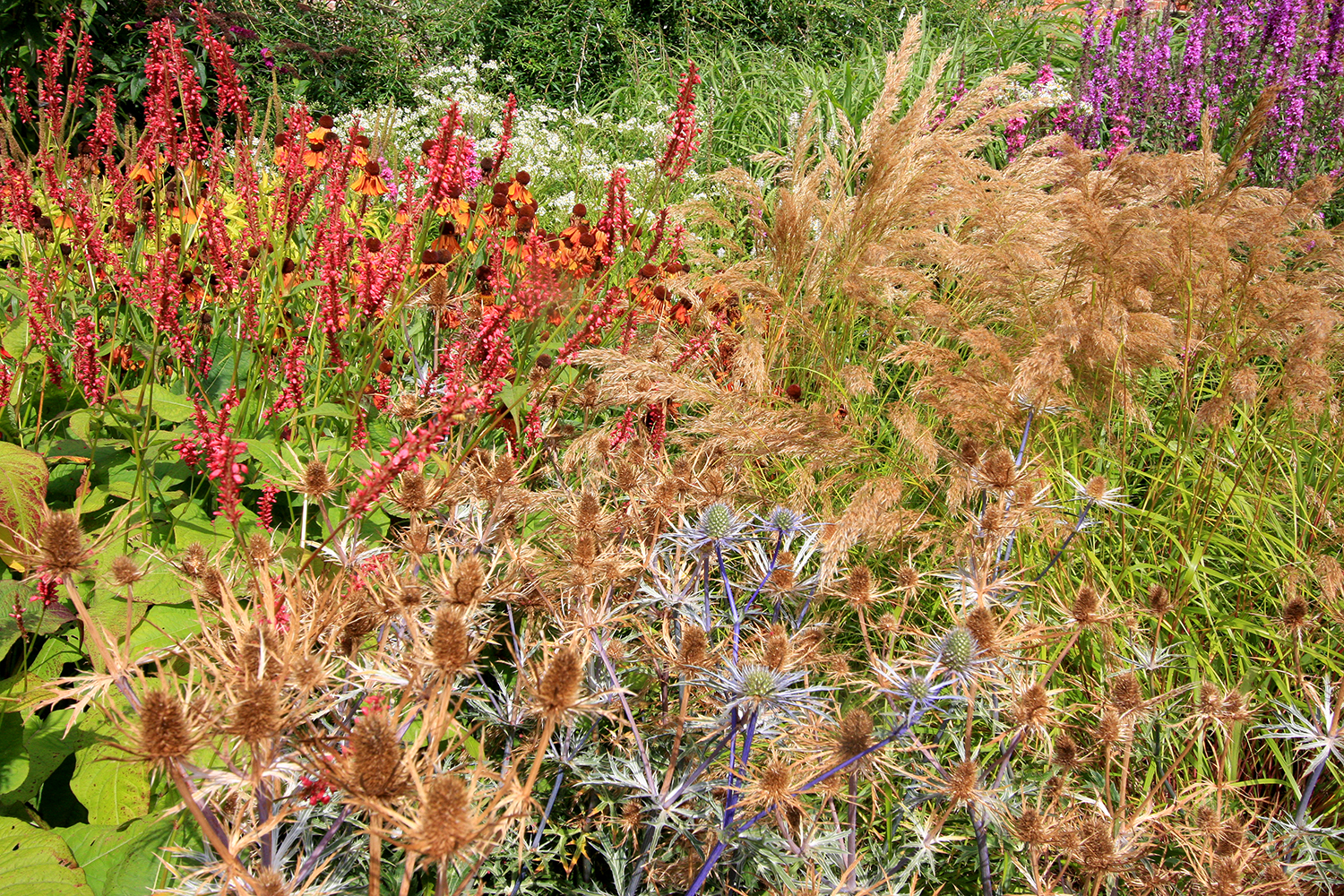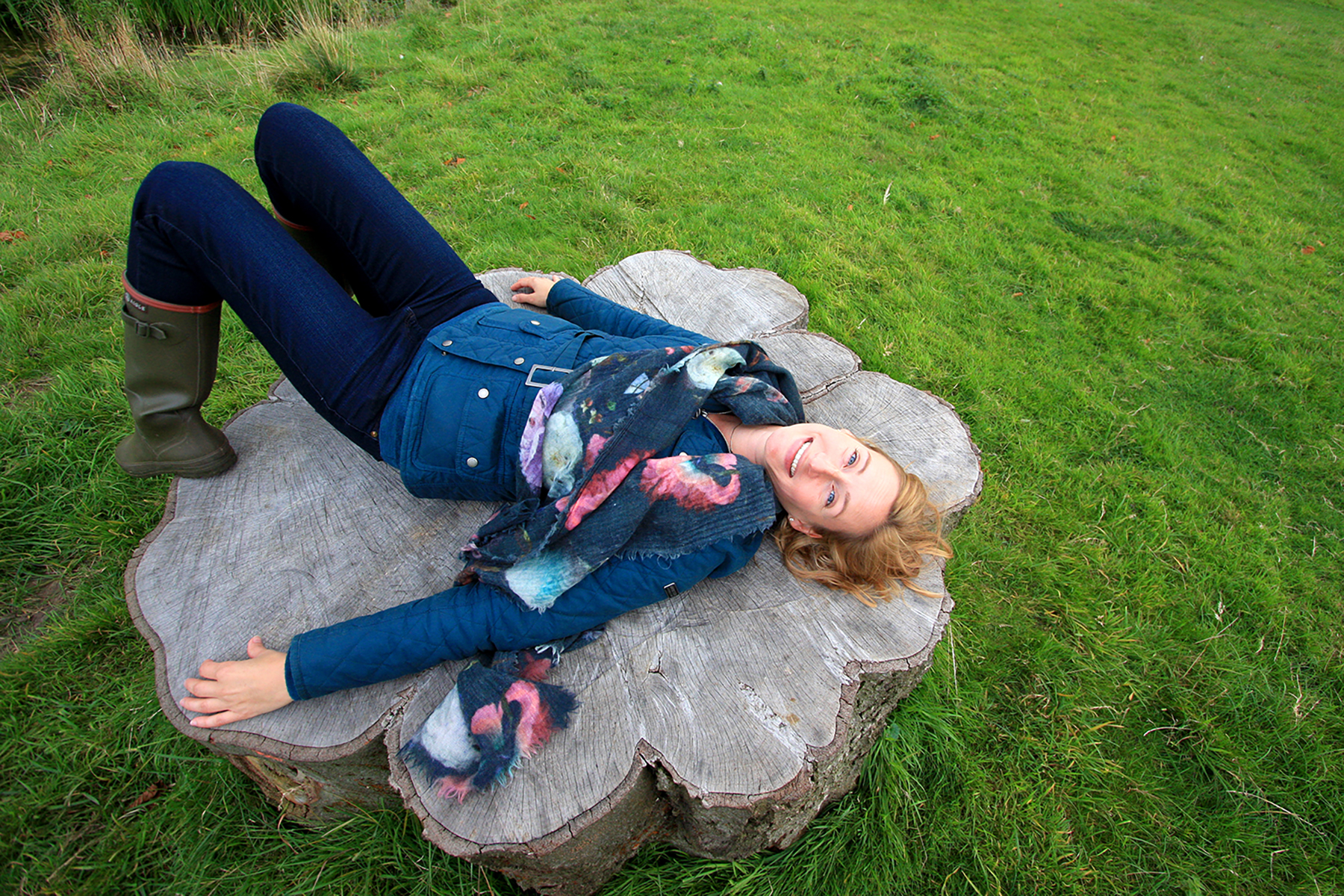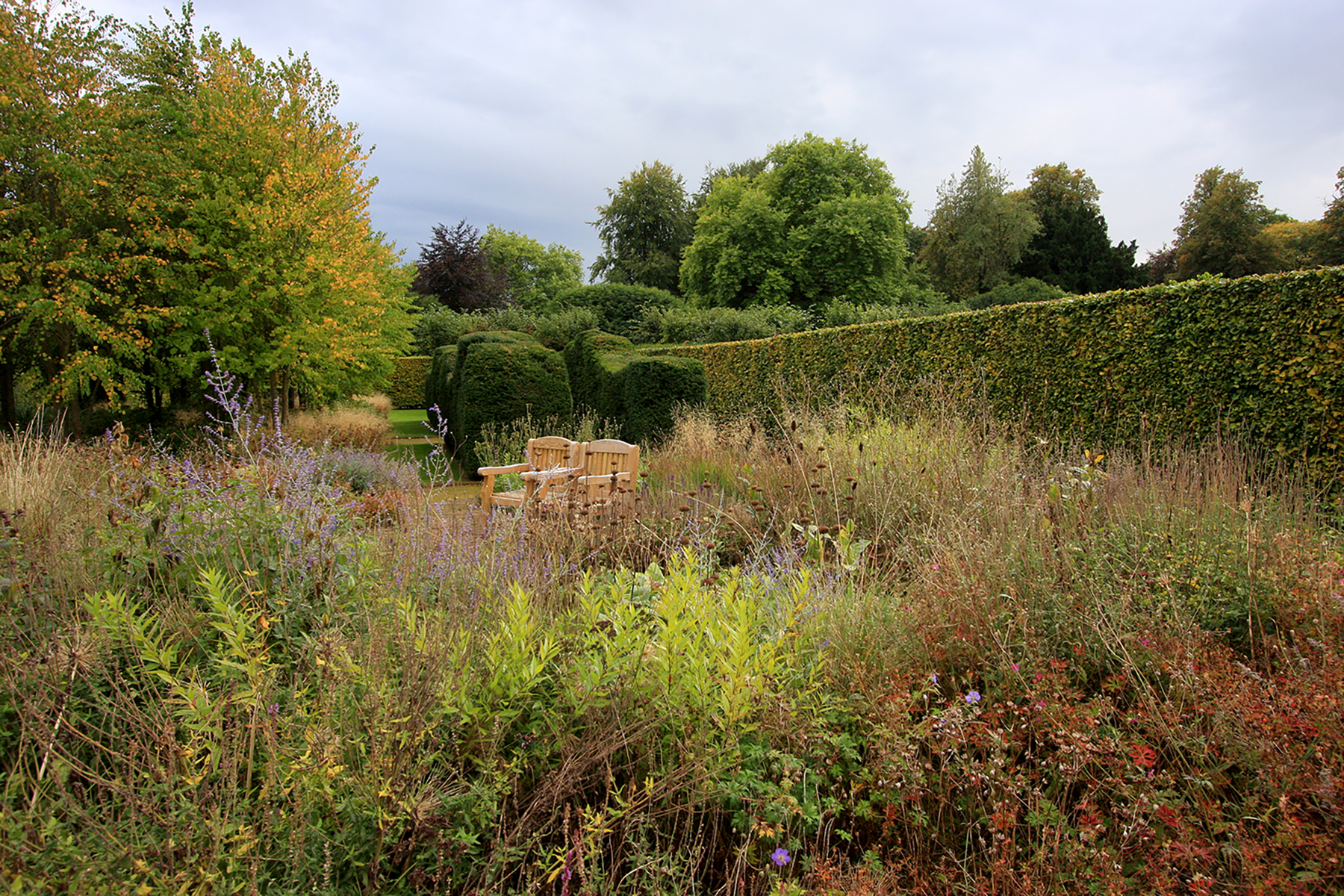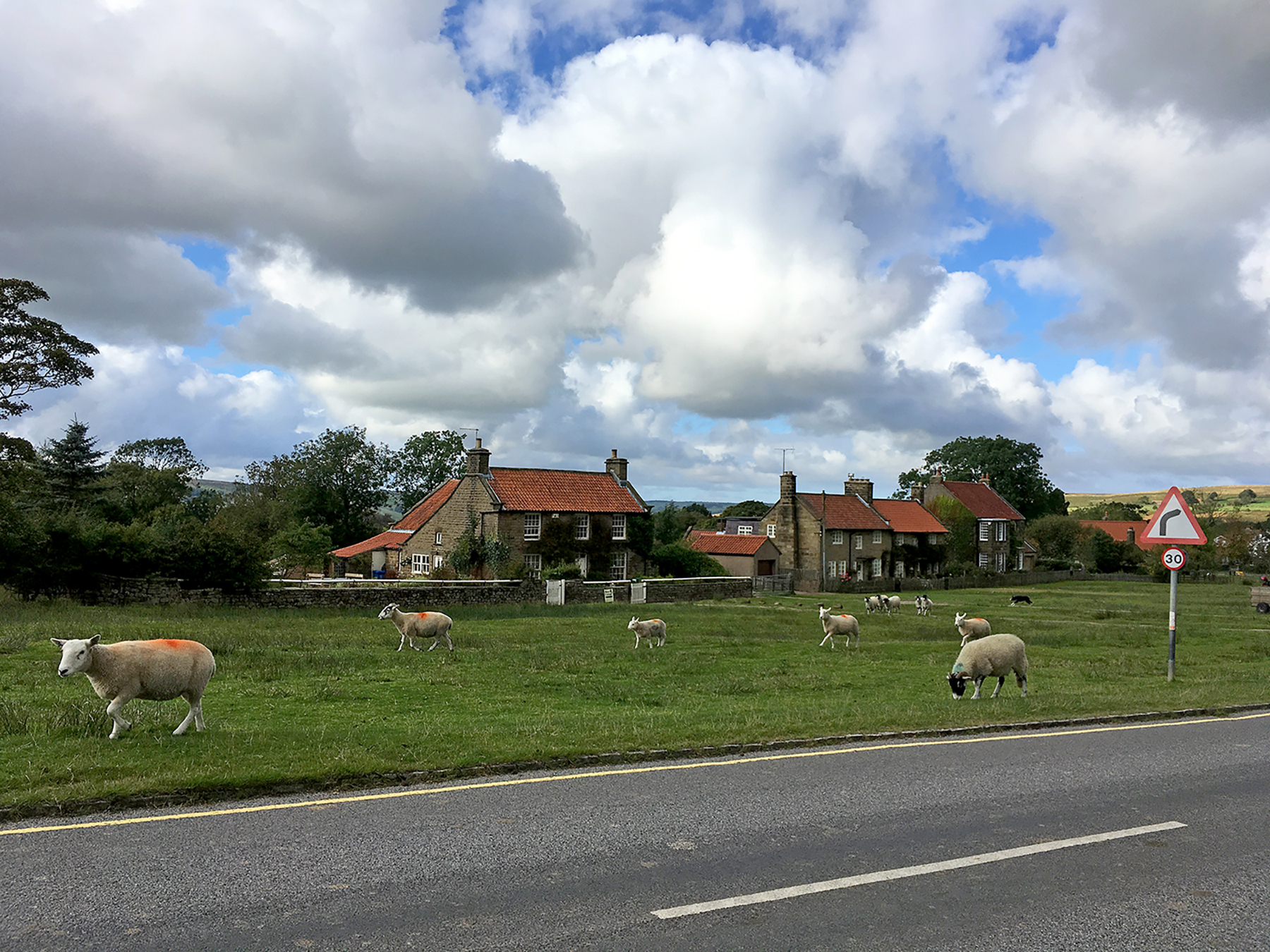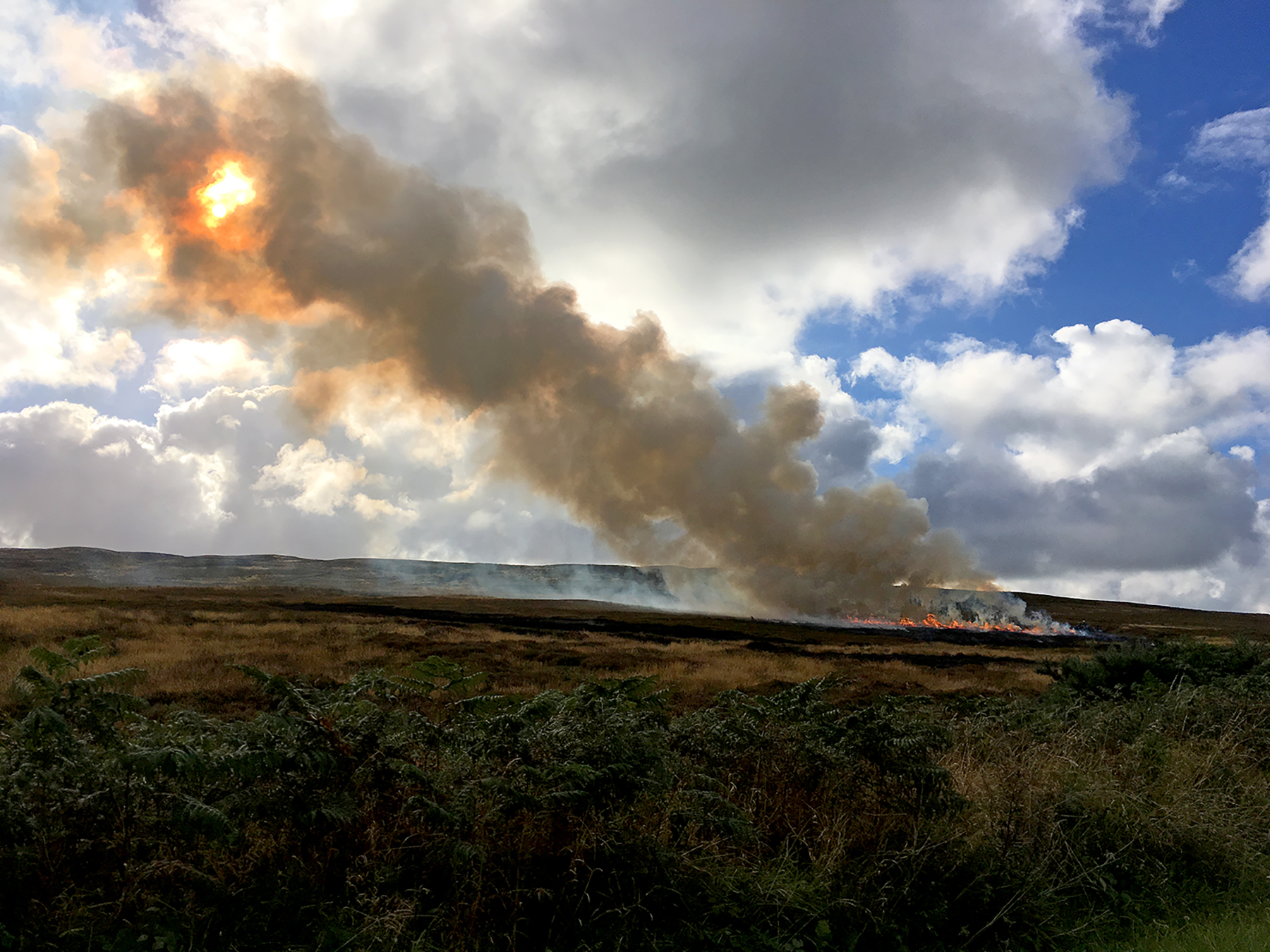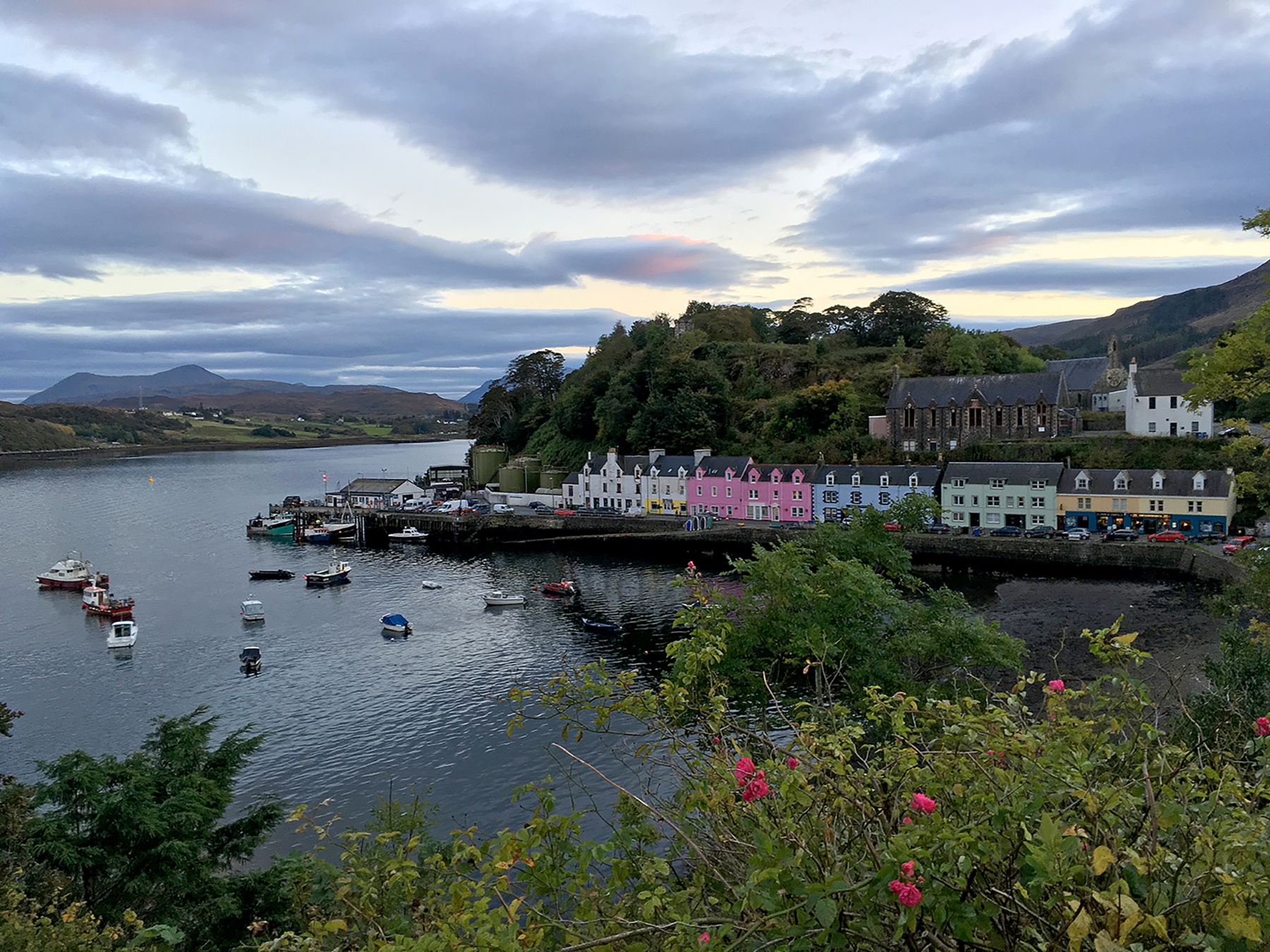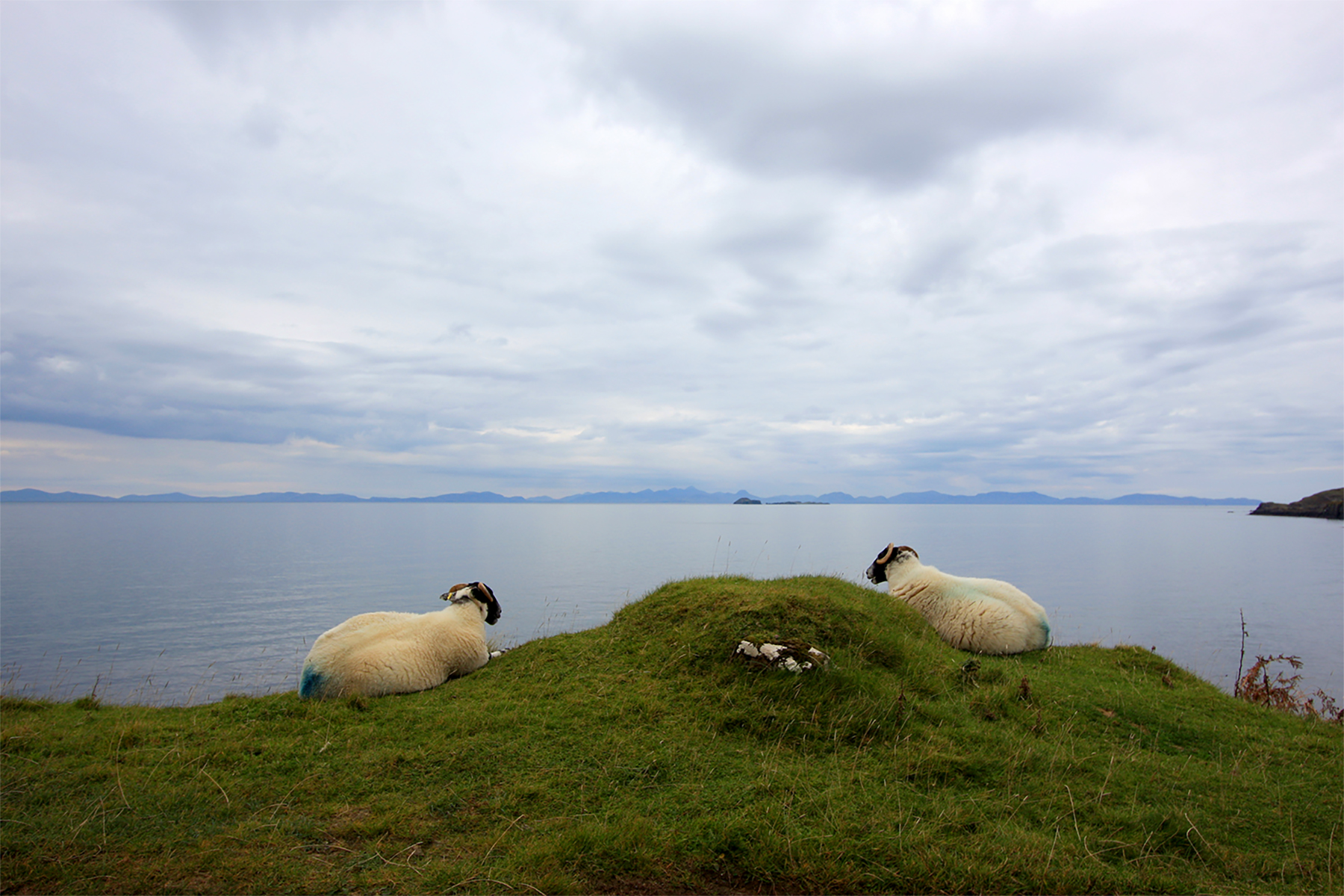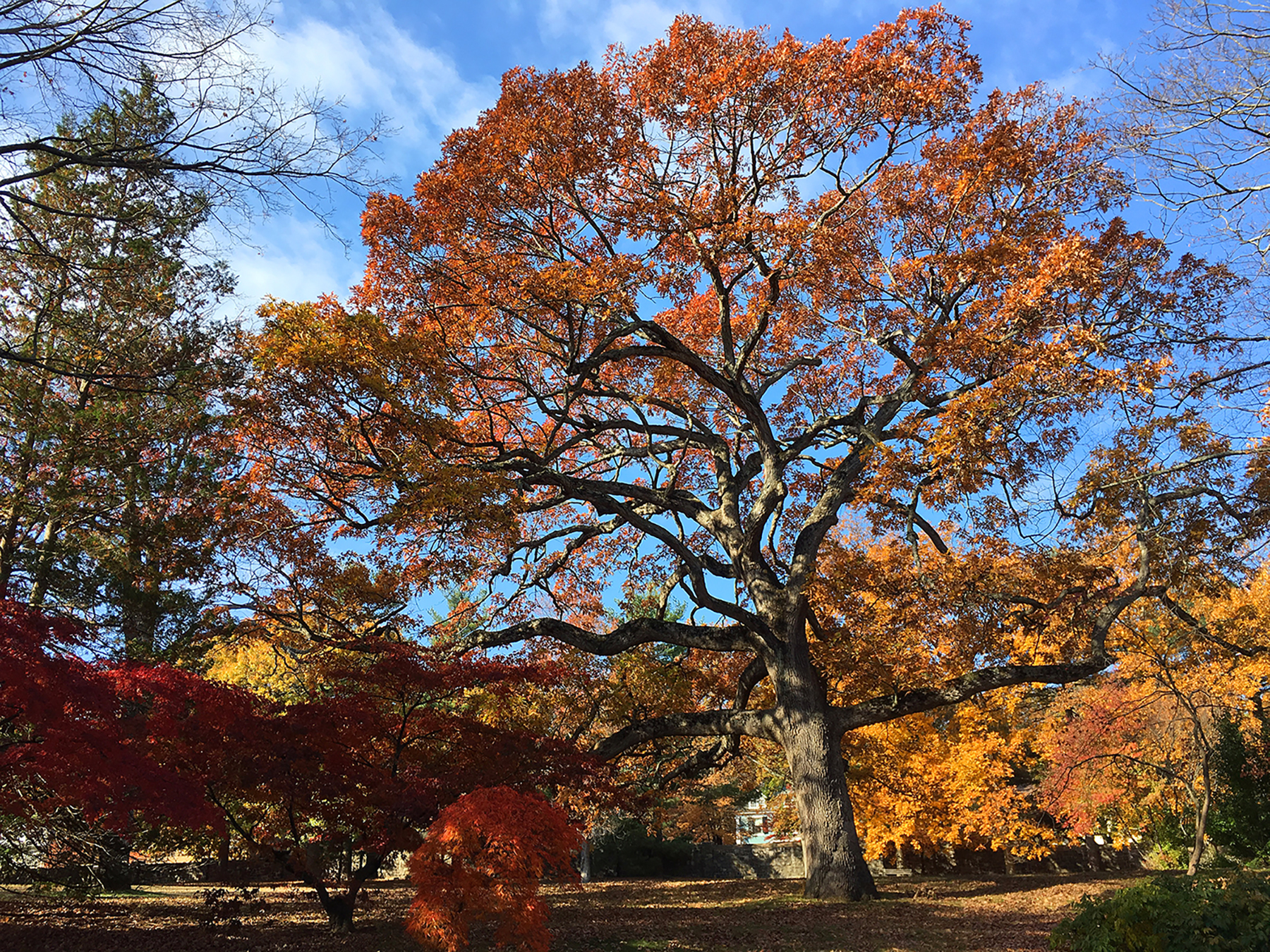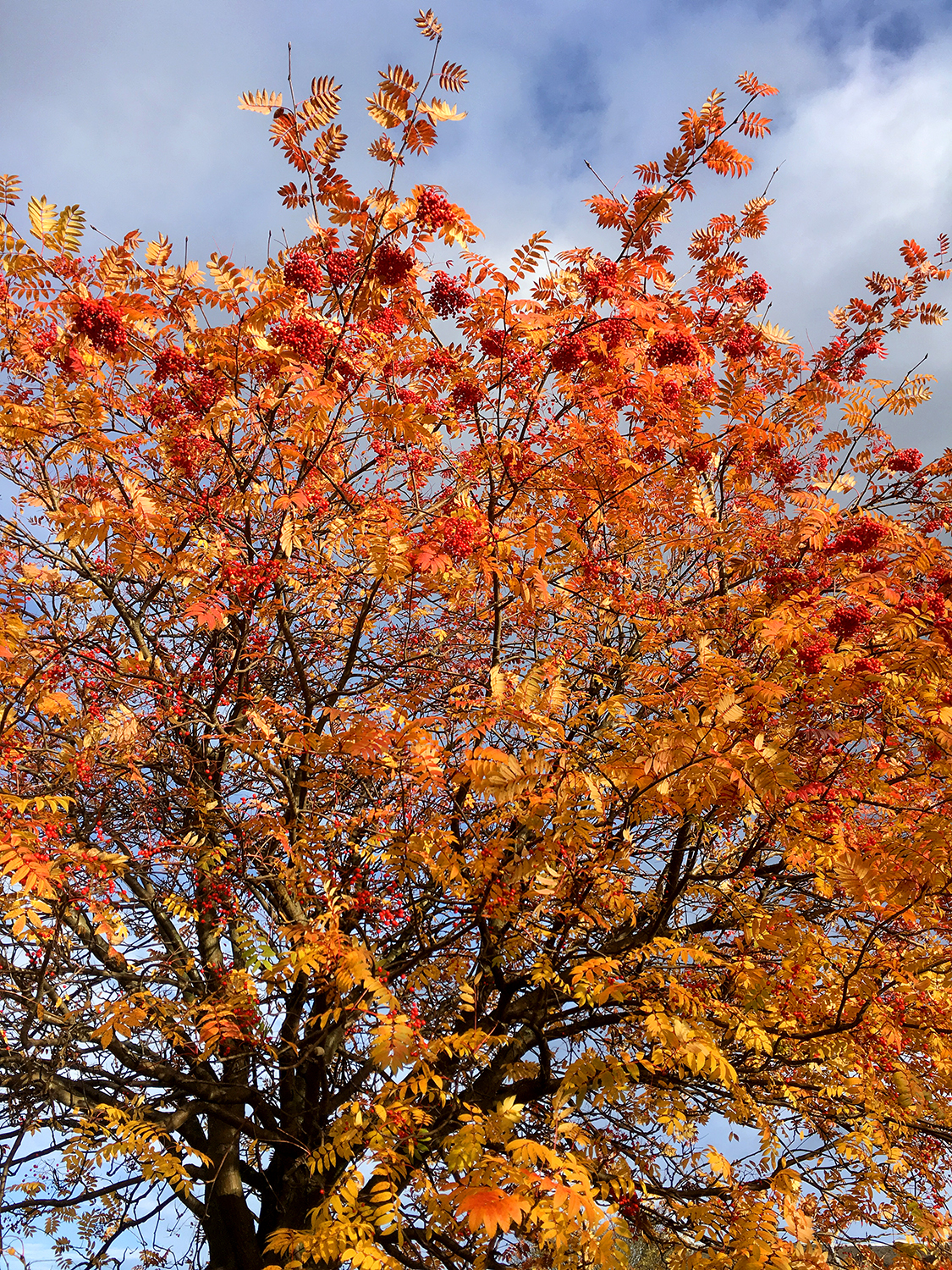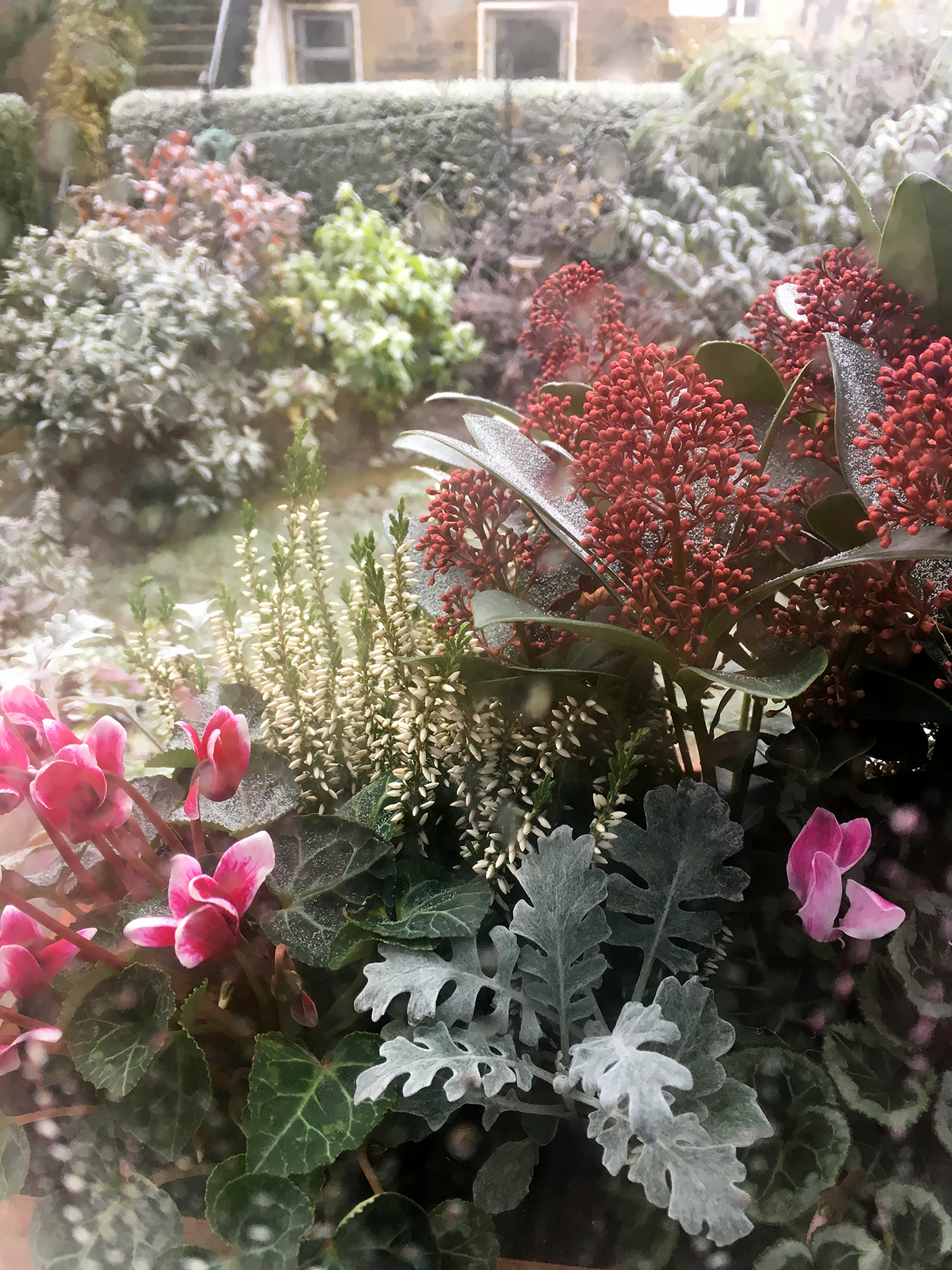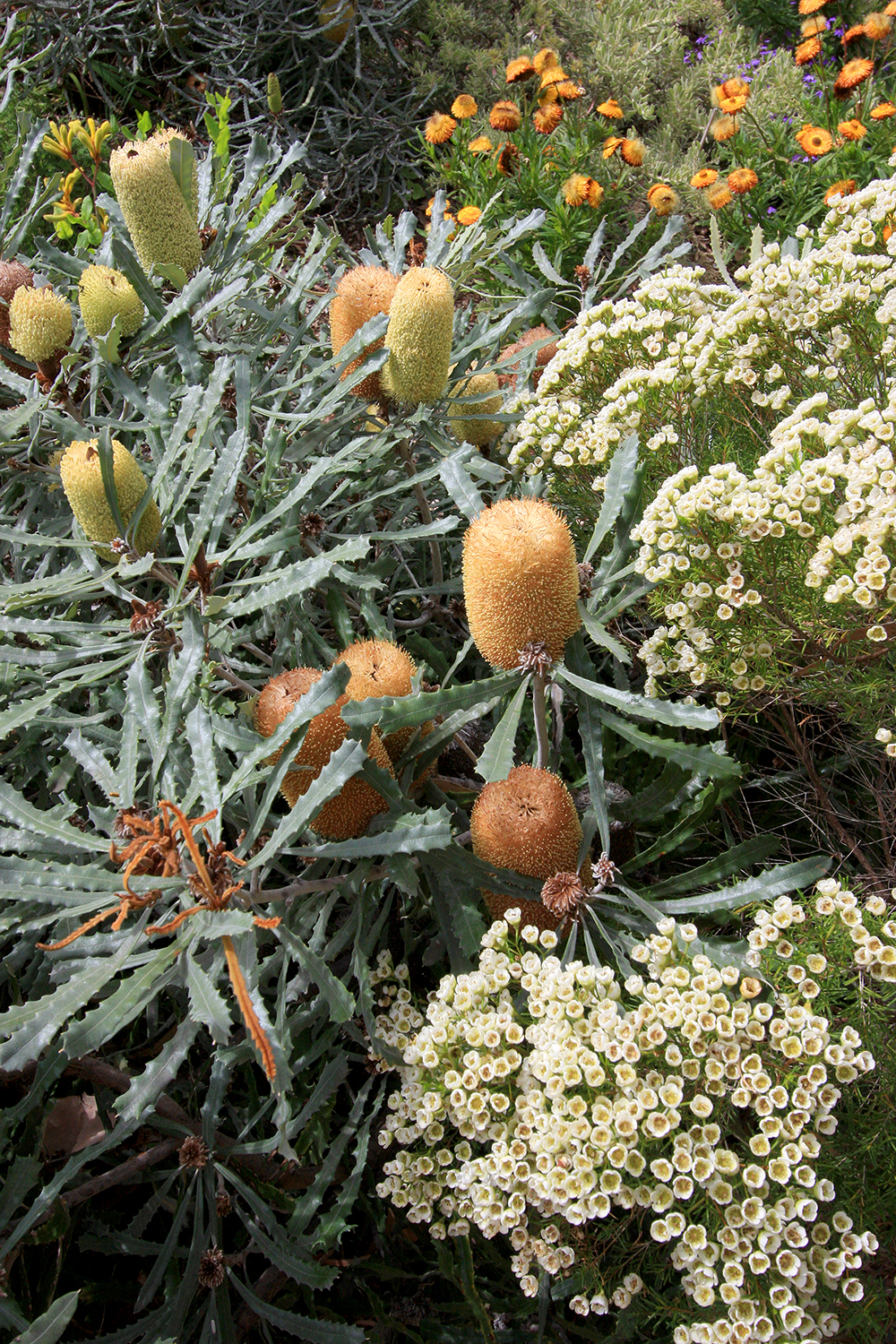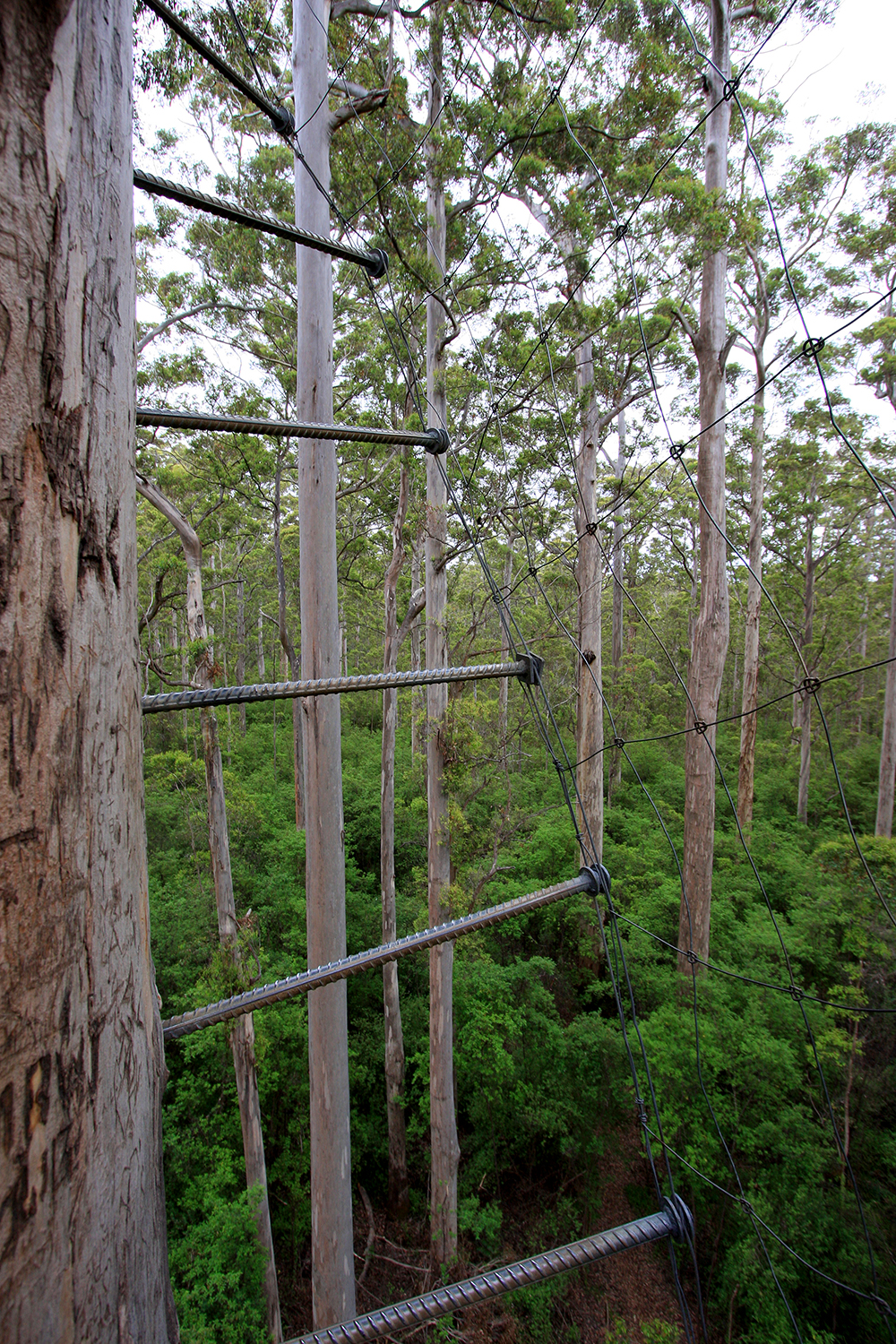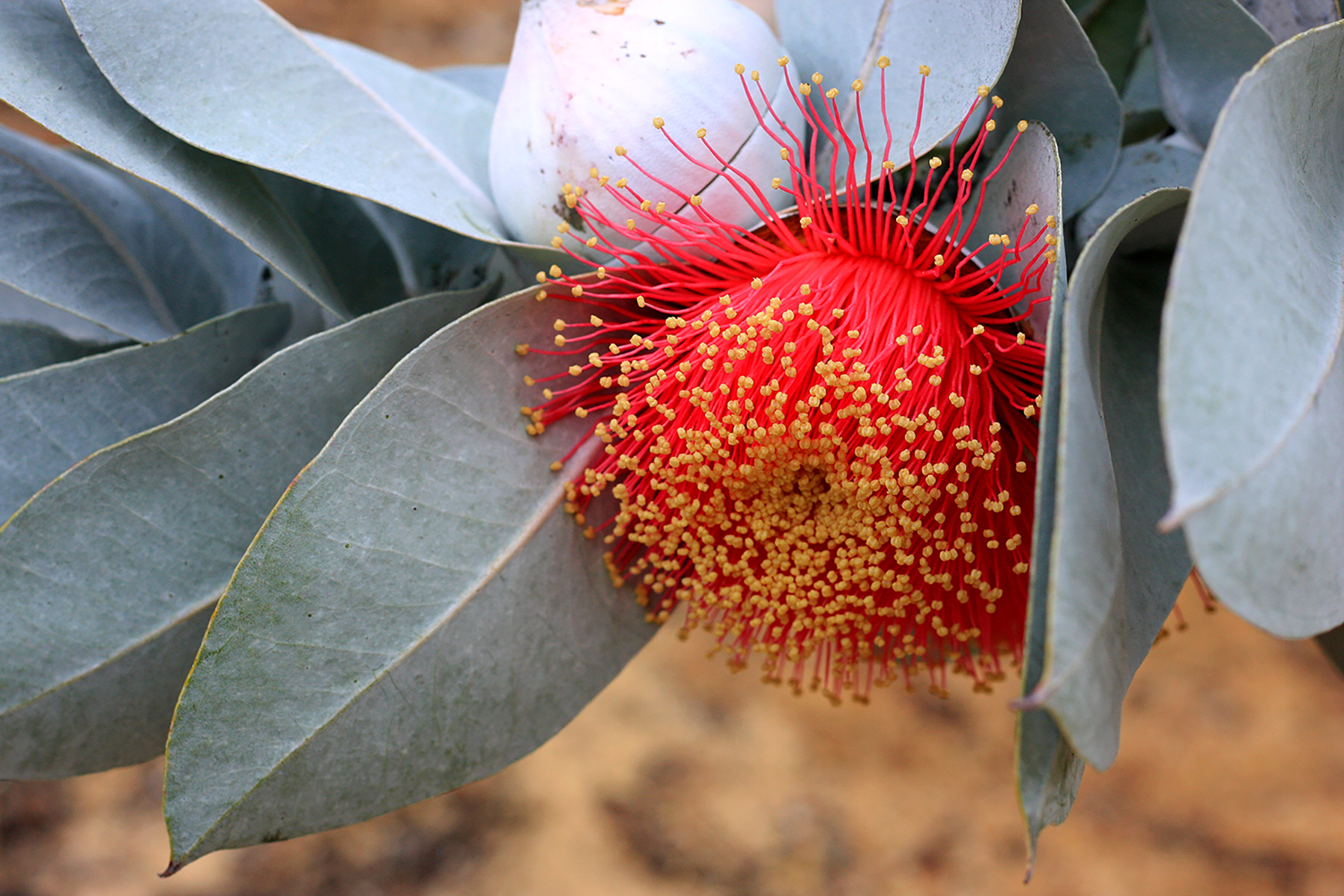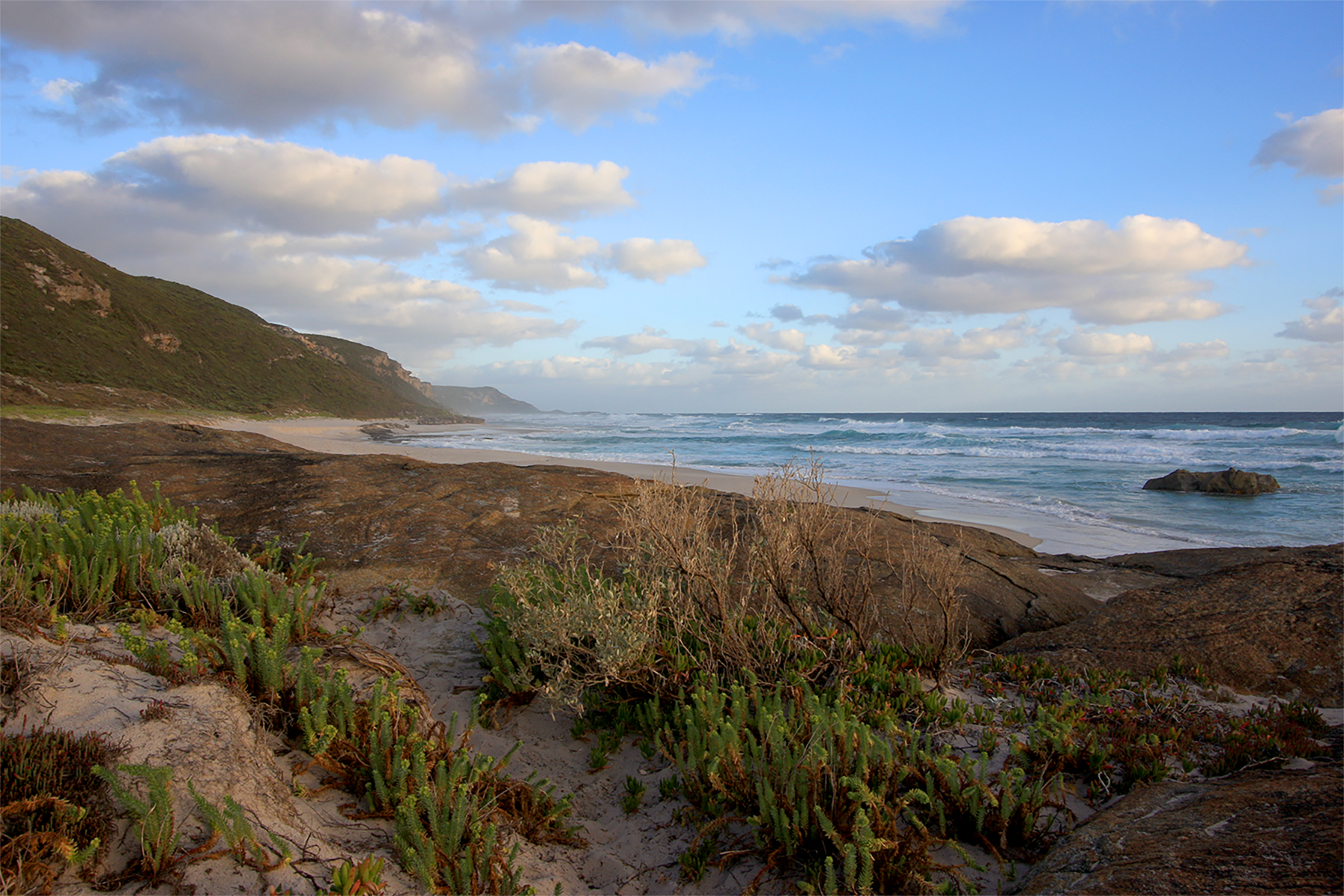Following the path around the ochre tower one enters the South Garden. What I like about this garden is how domestic it feels, and yet it looks so stylish with excellent use of color, witty art installations, and simple but repeated plantings that form a rhythm along the path. It doesn't hurt that it faces a bucolic pasture that housed, on that day, two stunning white horses that were kicking up their heels as if on command to frolic.
I'm not usually fond of purple smokebush (Cotinus coggygria). I suspect it's because for the five years I lived near Washington, D.C. I had to walk past a solitary, unhealthy, and pathetically maintained specimen going in and out of my flat each day. I itched to put it out of its misery, but lacking that agency I just let it sour me on the whole genus. I keep trying to come around, but its slow going. This garden is probably the first in which I found myself enjoying Cotinus, most likely because it is well-maintained and so effectively used as a dark accent along the walk. The perfectly chosen and contrasting blue on the posts also goes a long way toward my enjoyment of the Cotinus. Imagine the image below without the blue posts and Lutyens bench at the far wall. Not nearly as effective, right?
Further into the South Garden is a very inviting patio and a few pieces of art that I really enjoyed. I always like a big tree trunk repurposed as landscape art (a la David Nash), and this elm with its golden sphere hits the spot. Once again notice the color work here--that sphere picking up the tones in the ochre building. Beautiful. Cover either the sphere or the building with your finger and see what happens to the composition.
I also loved these mirrored portholes making a feature out of what is potentially a mechanical eyesore. They looked especially nice covered in raindrops.
From the South Garden one passes through this gate on the way to the House Field. The stone plinths beneath the urns read "Going to" on the left and "the Dogs" on the right--a joke that didn't reveal itself until I found the pet cemetery in the far corner of the field.
Looking back toward the house I failed to see the point of the House Field. I suspect it may have been a timing issue, as I've seen photos of the bed by the wall filled with bright red blooming Crocosmia. Again it's not a favorite plant but it makes a strong statement when flowering. I really couldn't tell what was going on with that bed between the two mown areas. It had a few little blooms but mostly just looked like a weed patch.
Another view of the South Garden shows a hint of its borrowed landscape. This spot was one of my favorites at Broadwoodside, possibly because I feel most at home in places with long countryside views. What can I say other than I'm a typical Homo sapiens with an evolutionary bias toward the savanna--just like Capability Brown!
I'll leave you to follow that link for some fascinating reading and when I return we'll head into the courtyards for Broadwoodside: Part 3.





